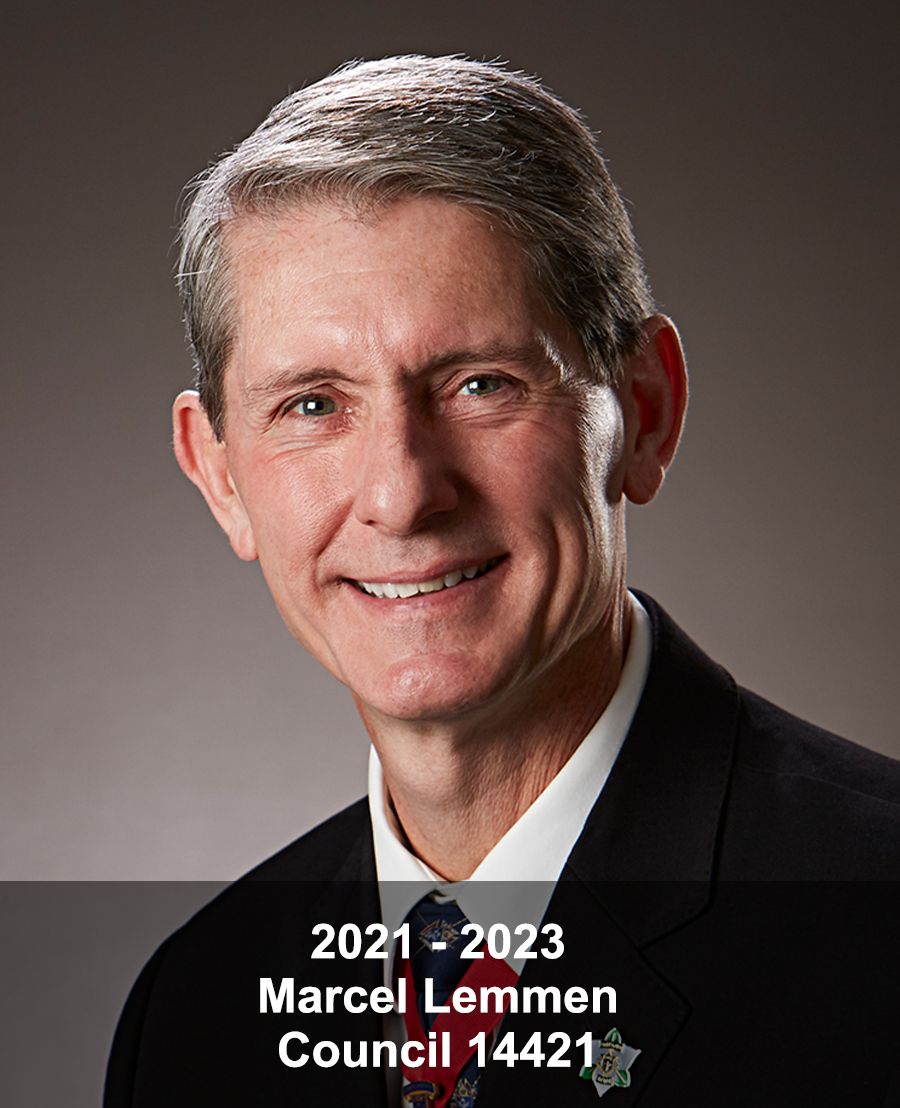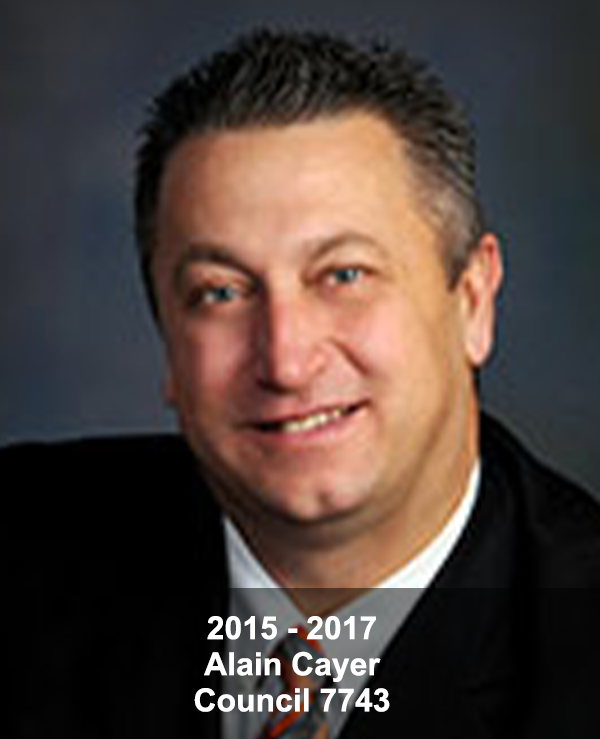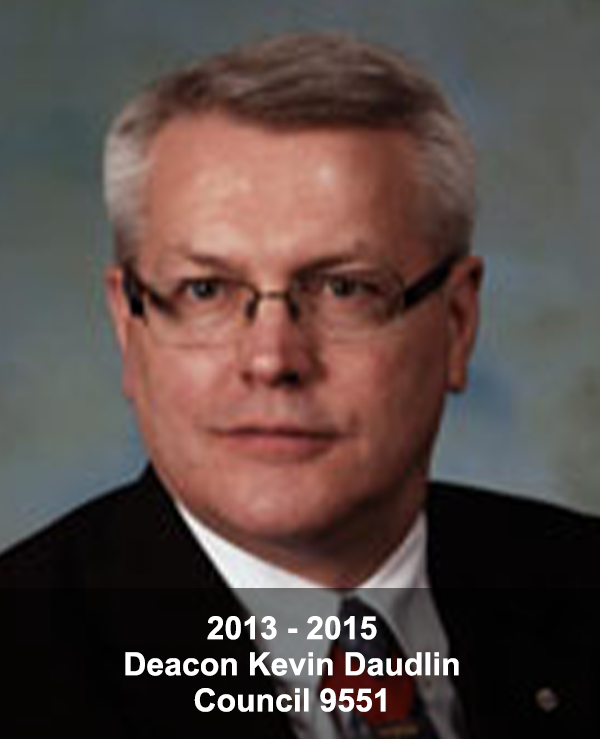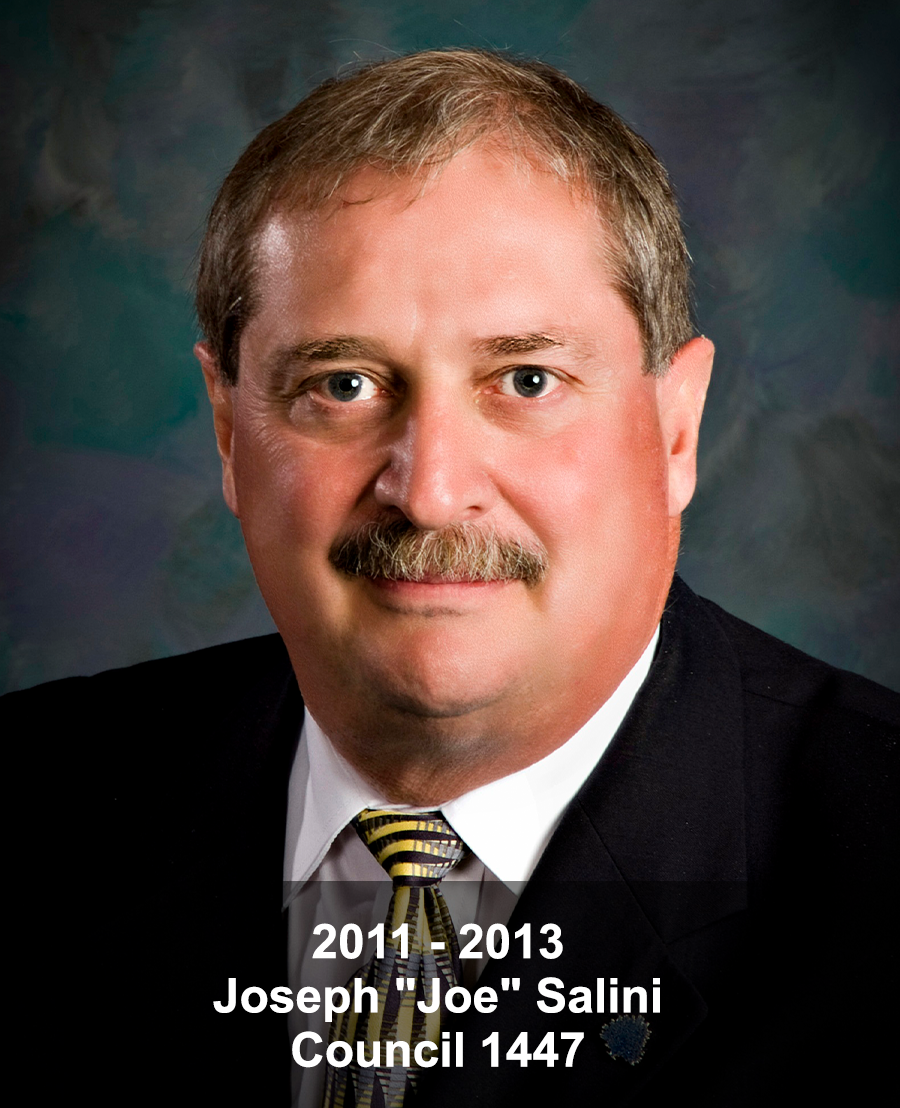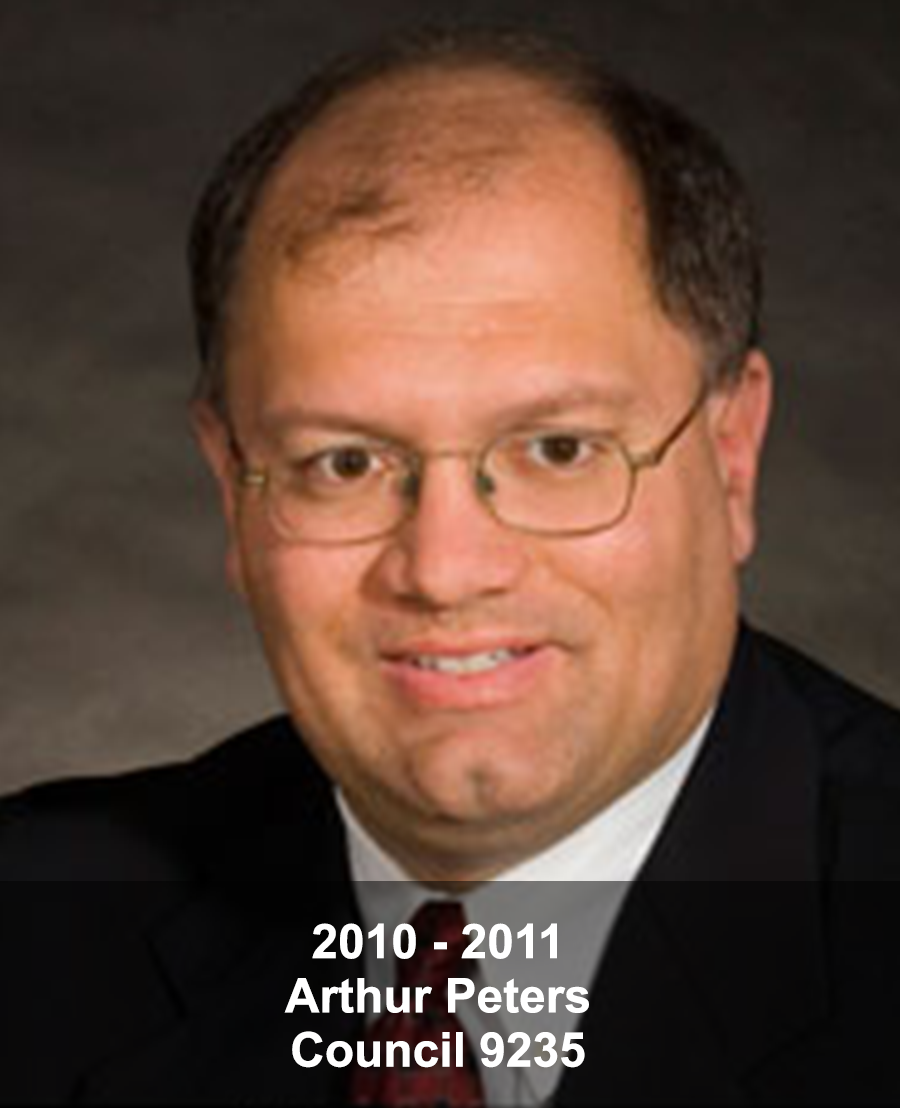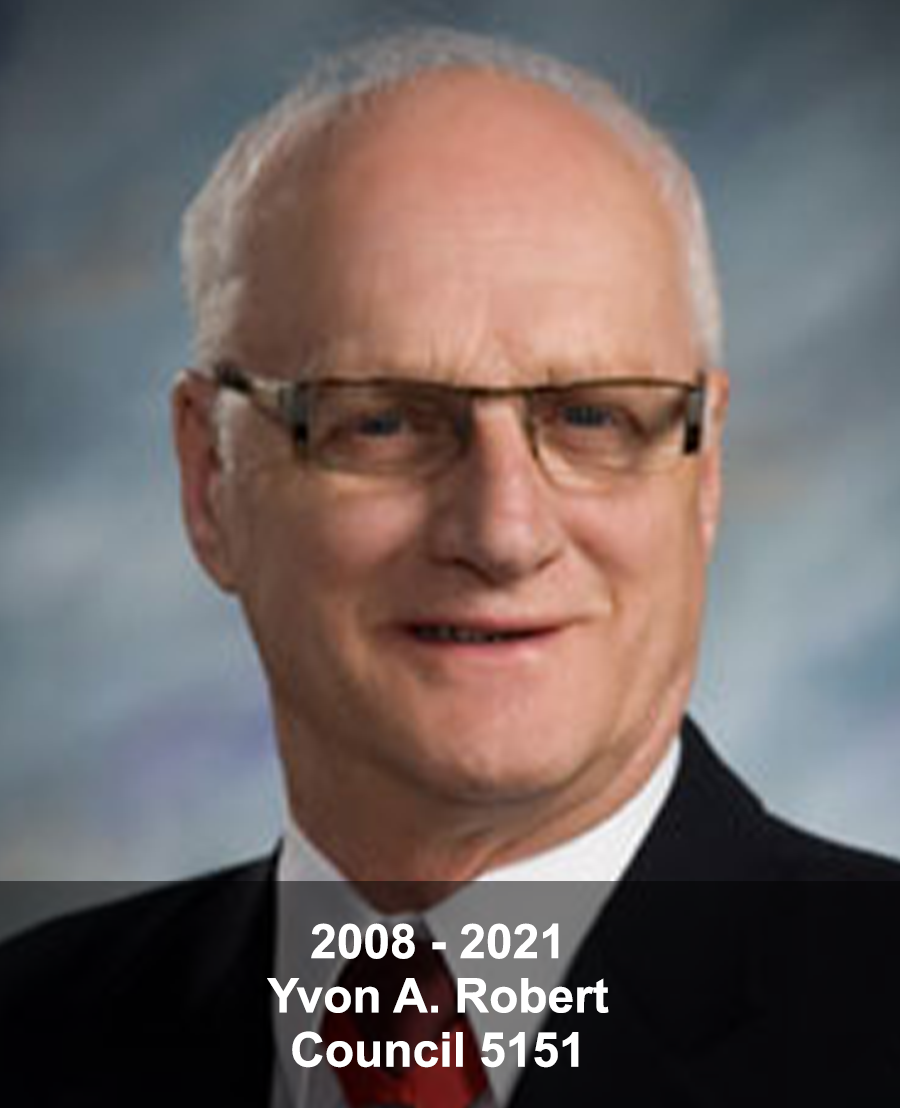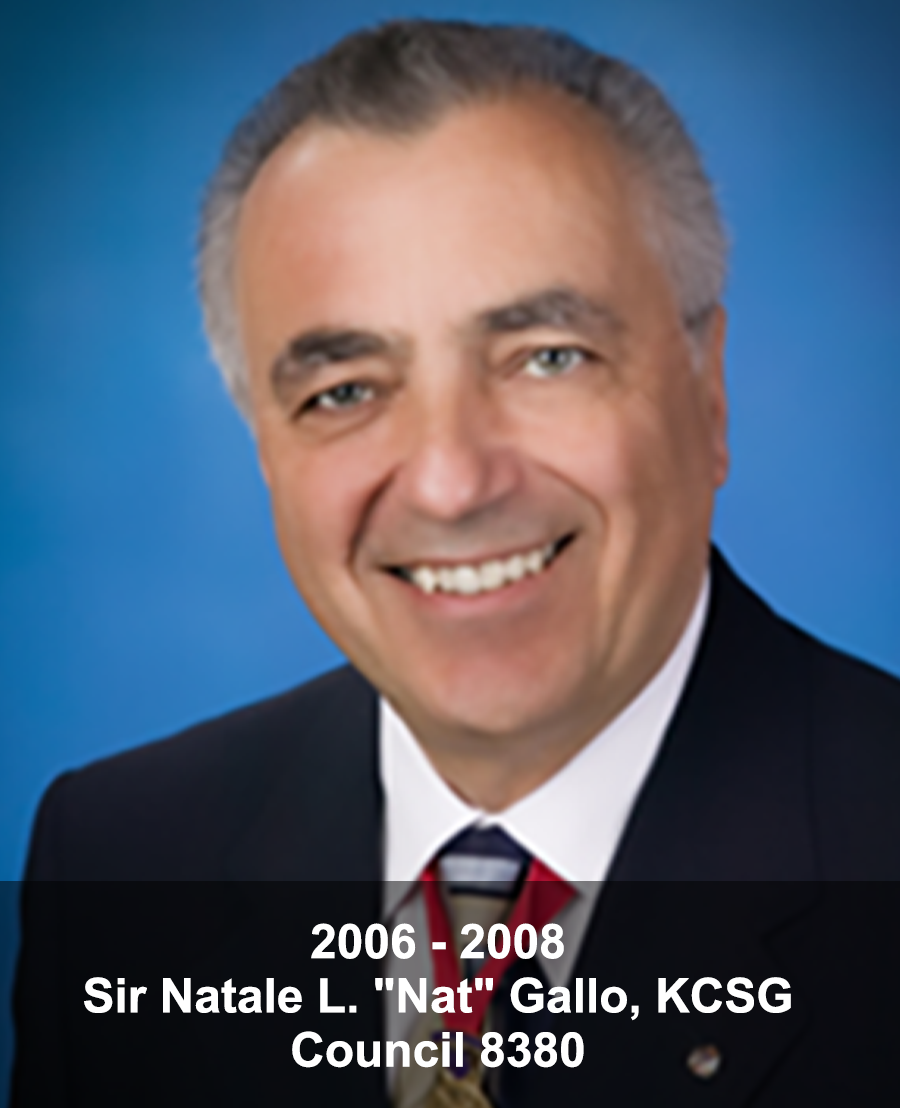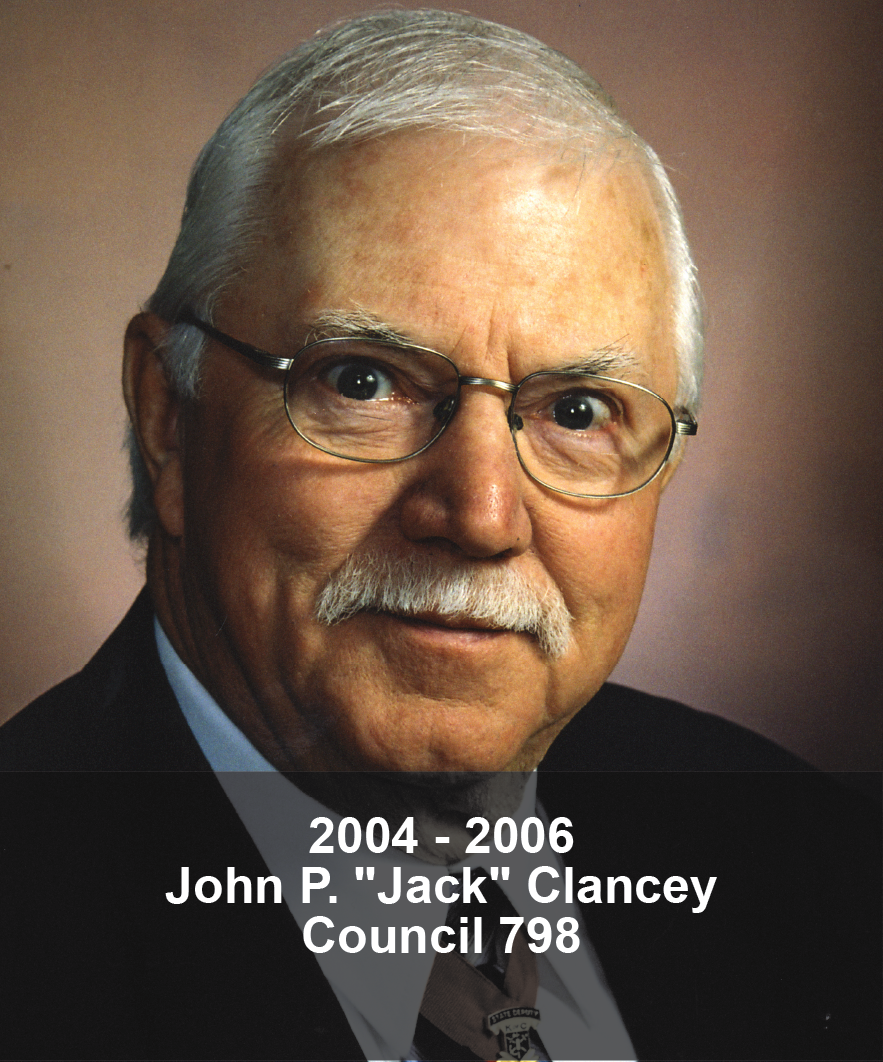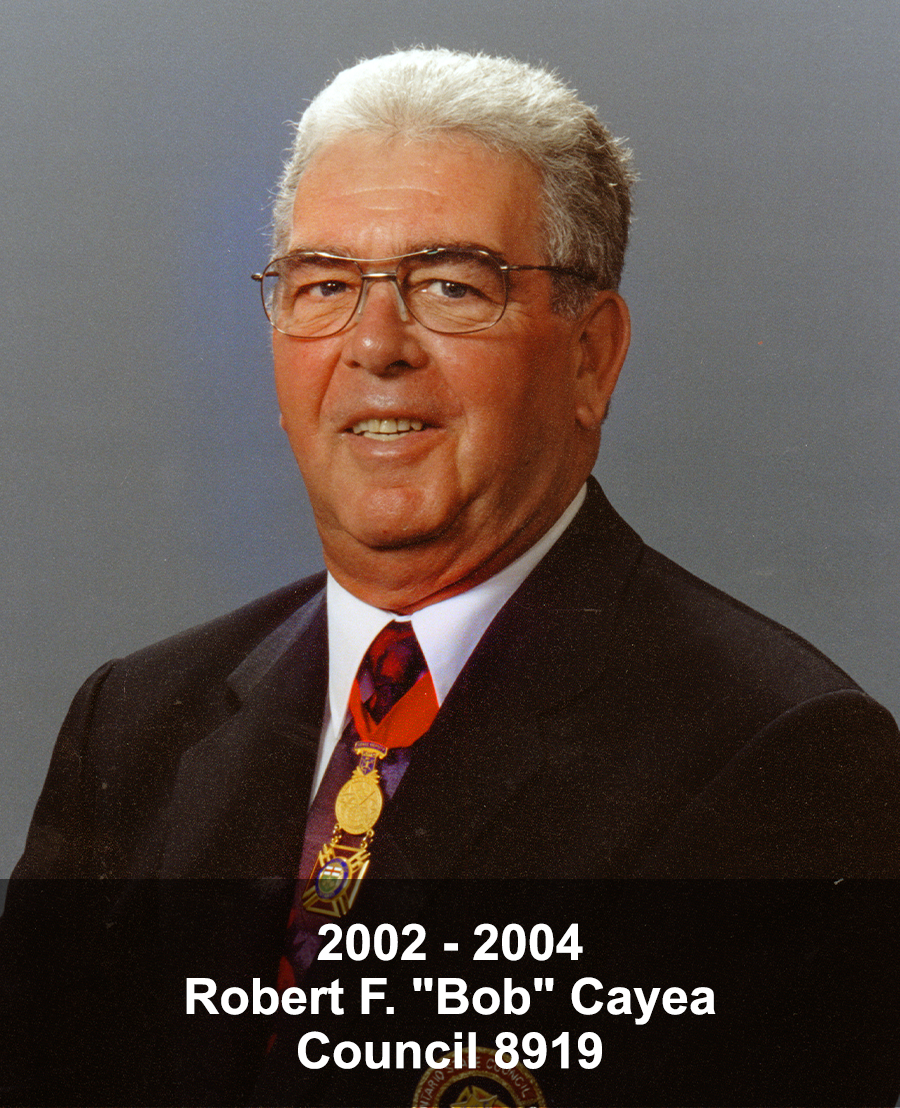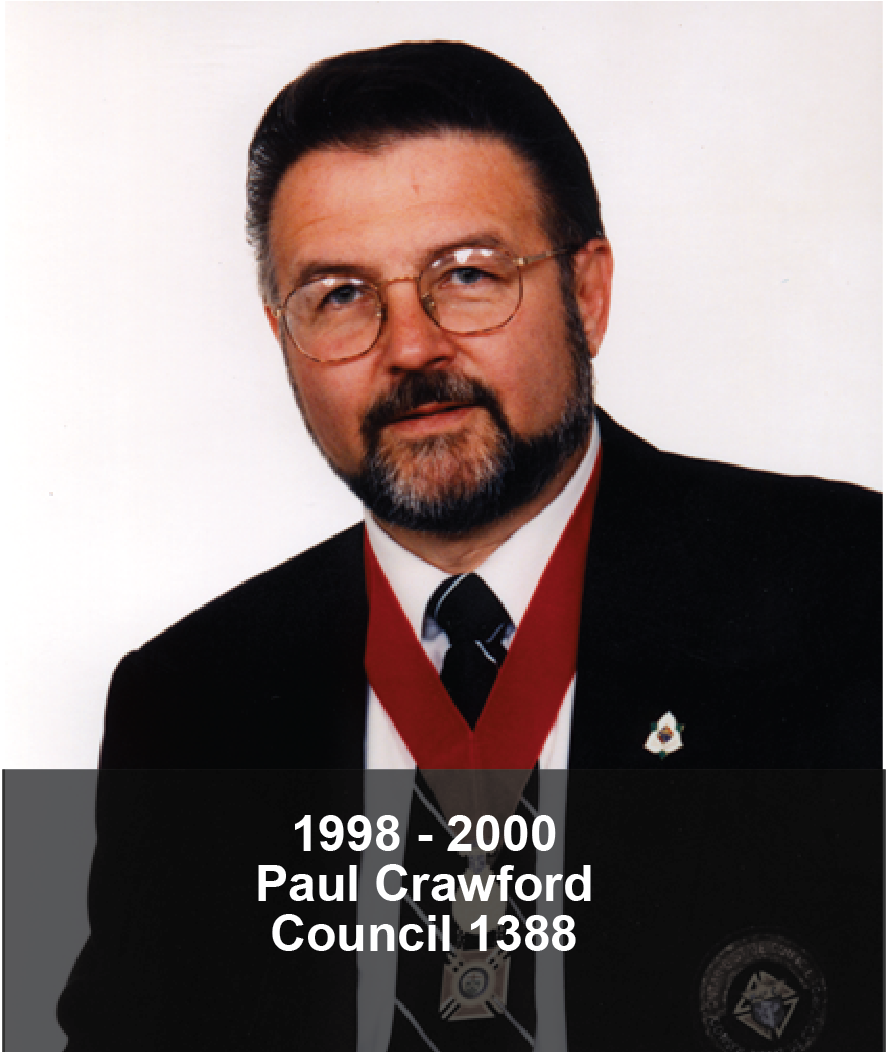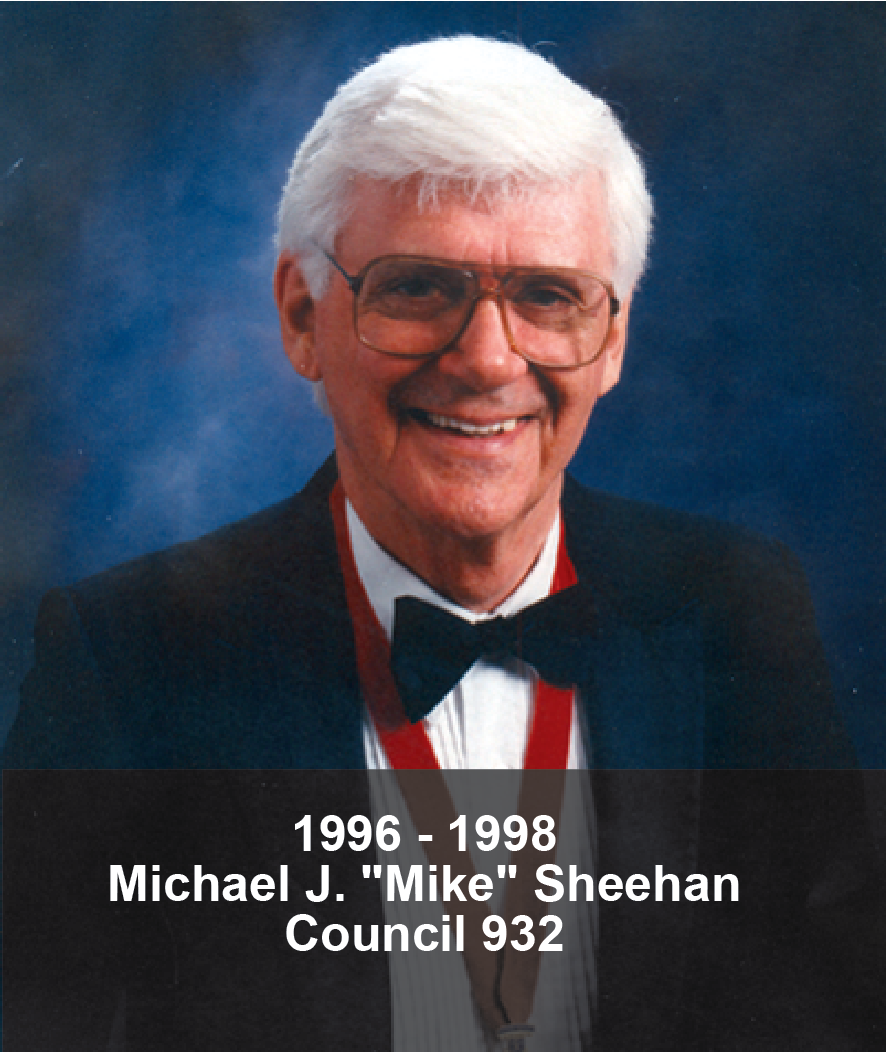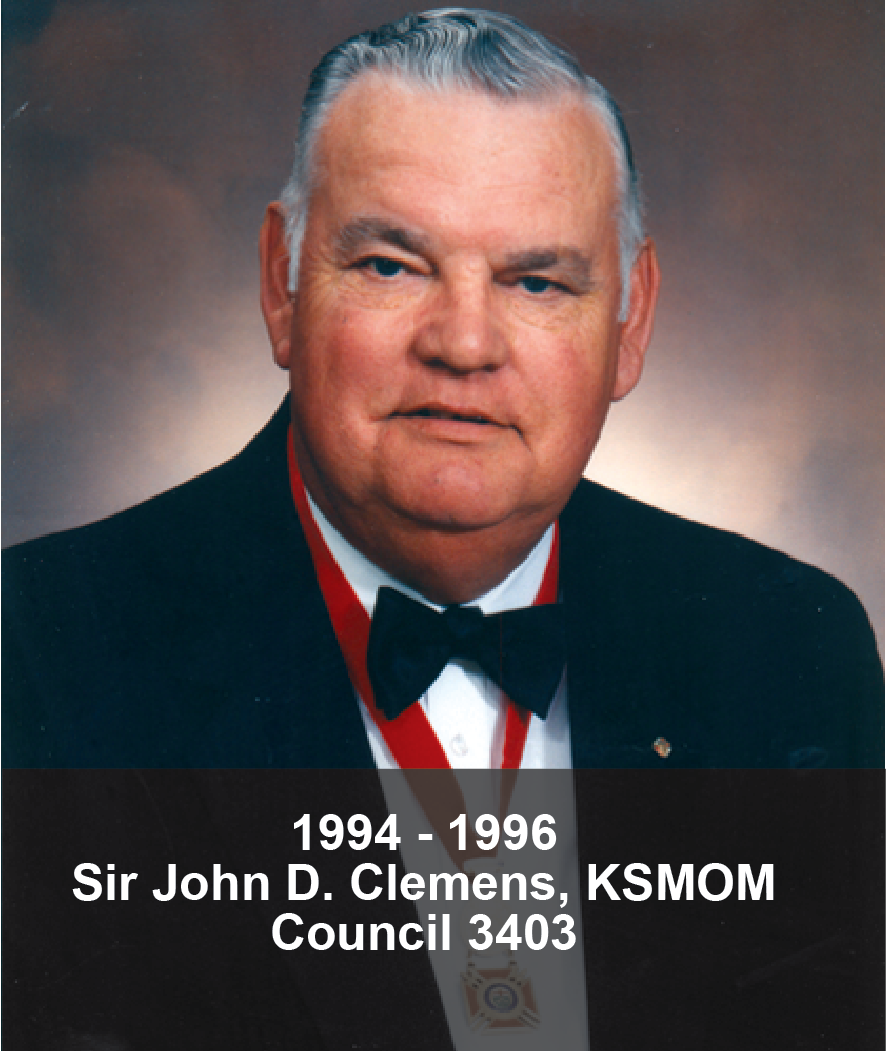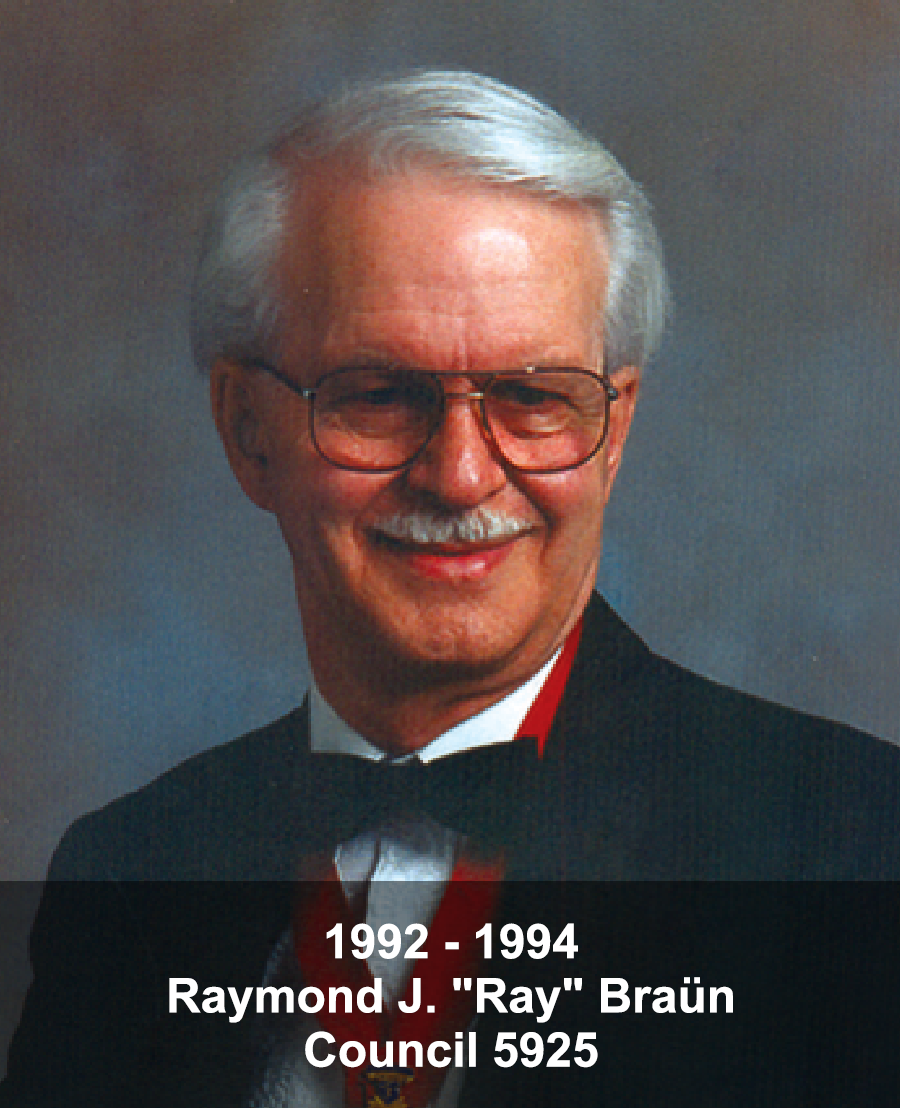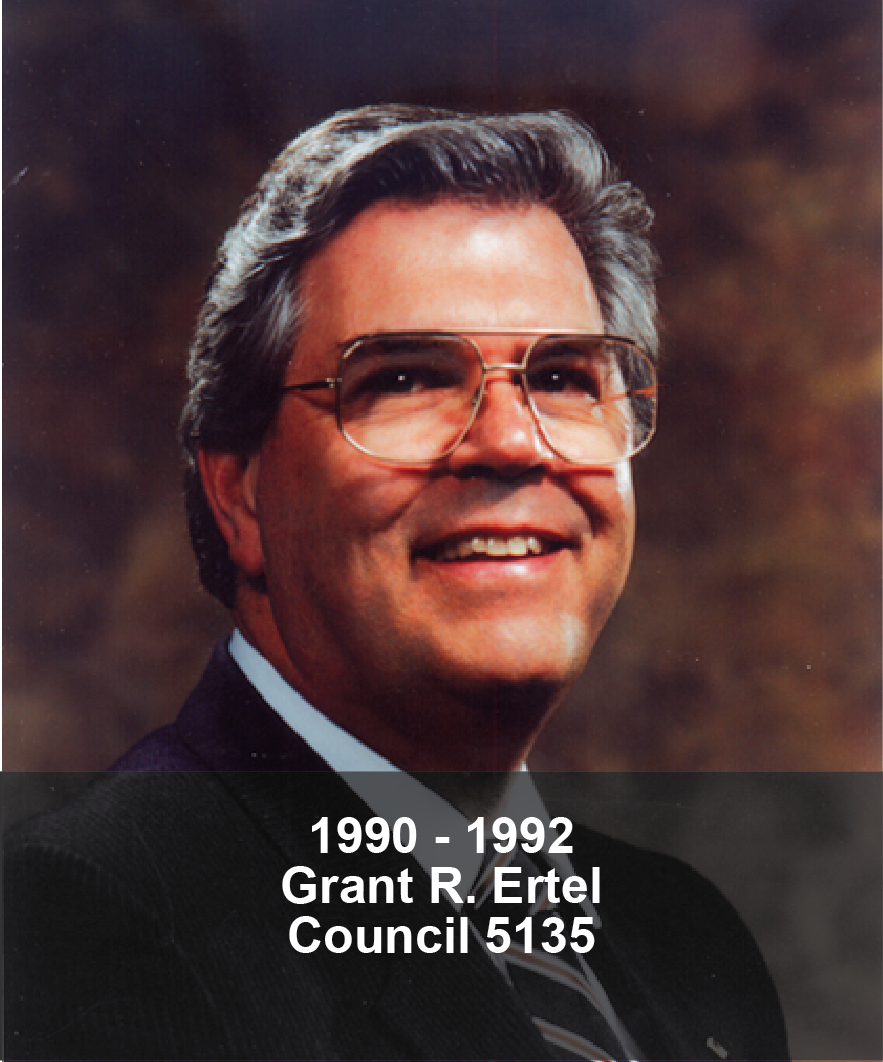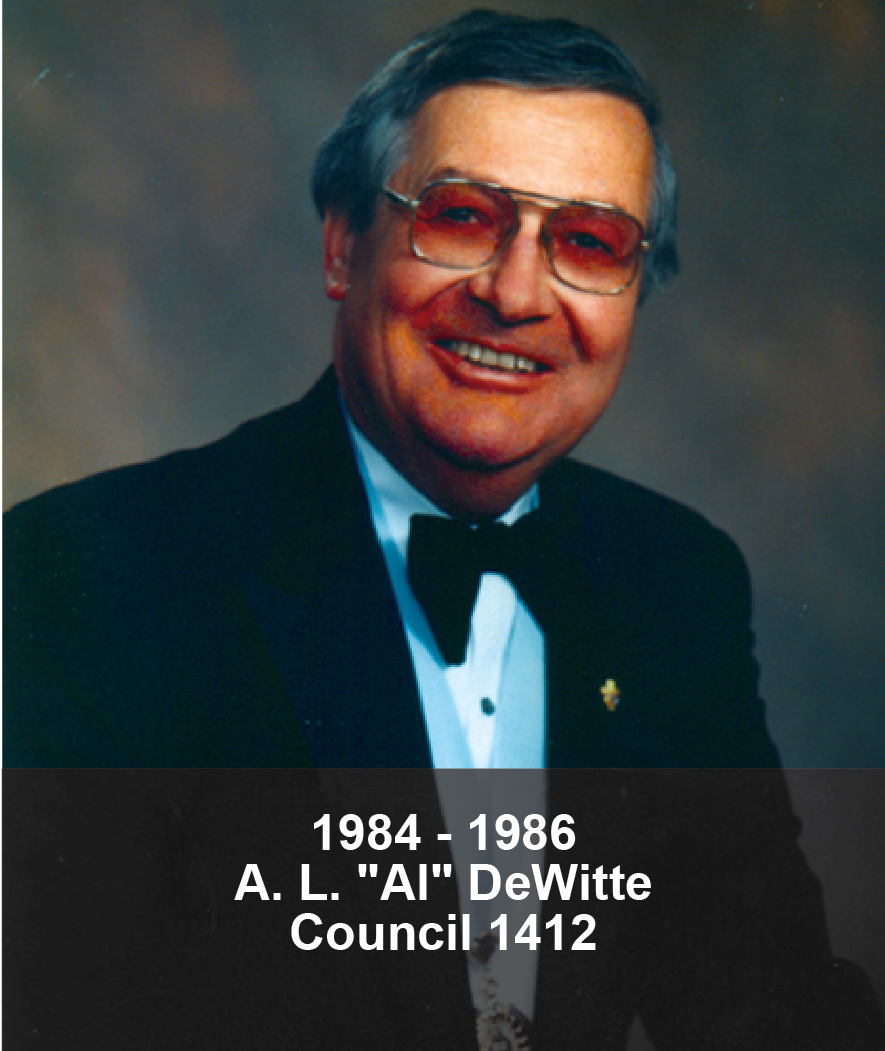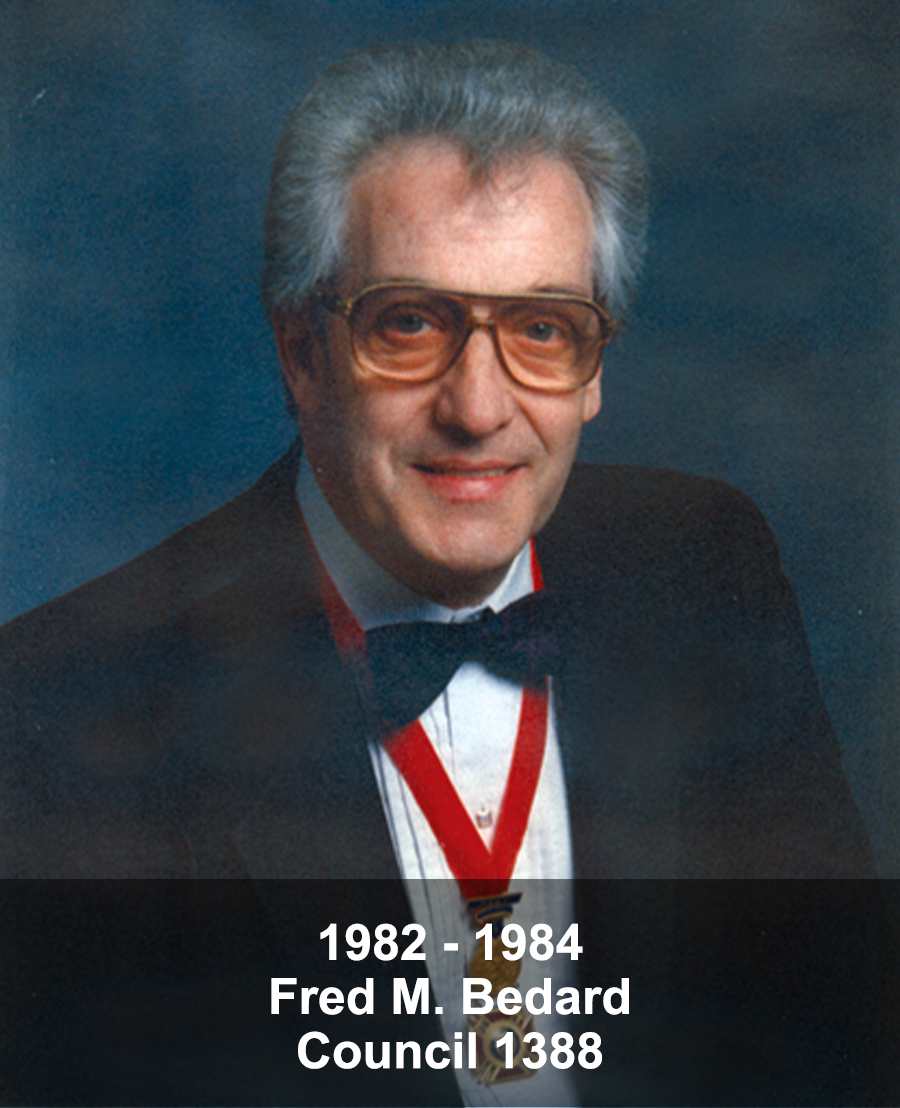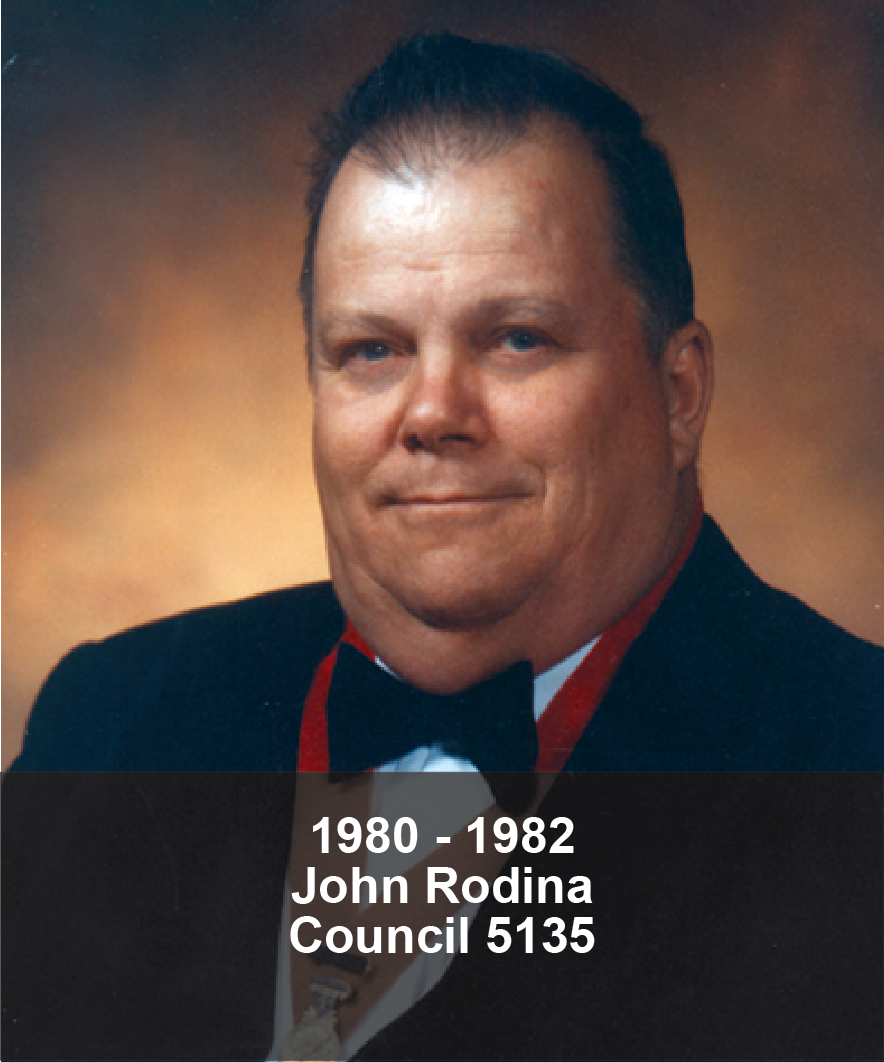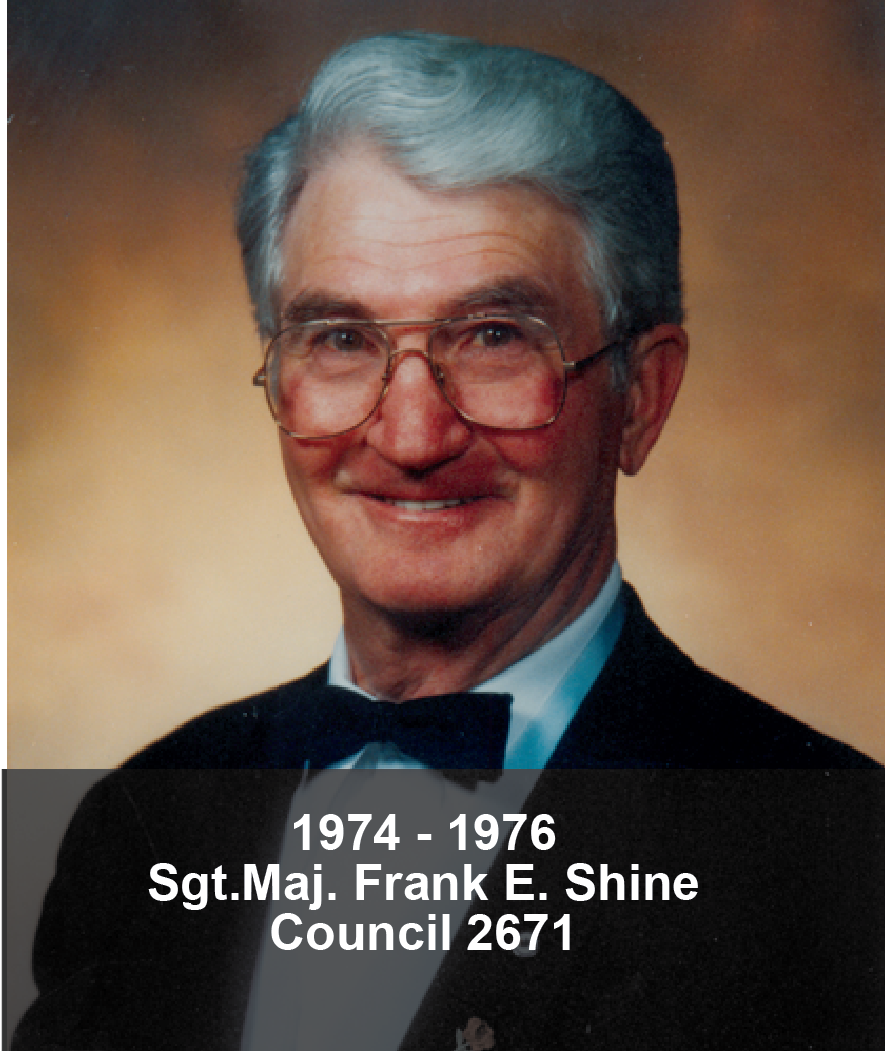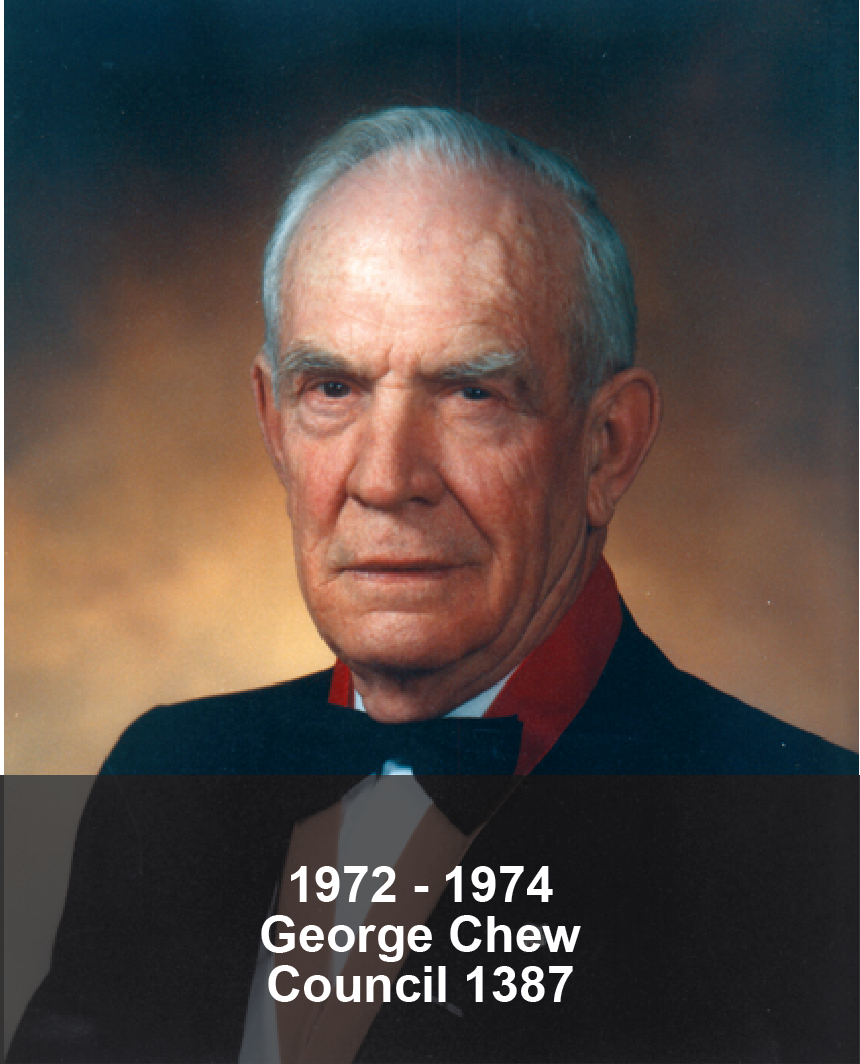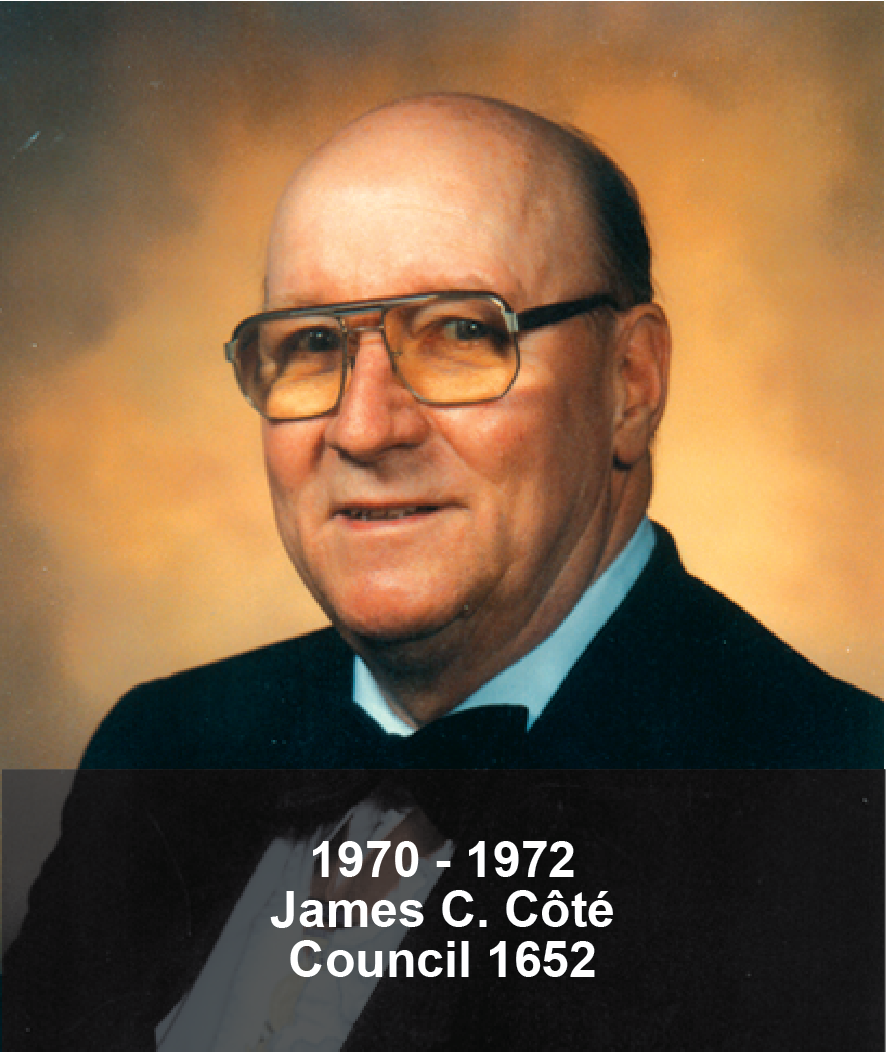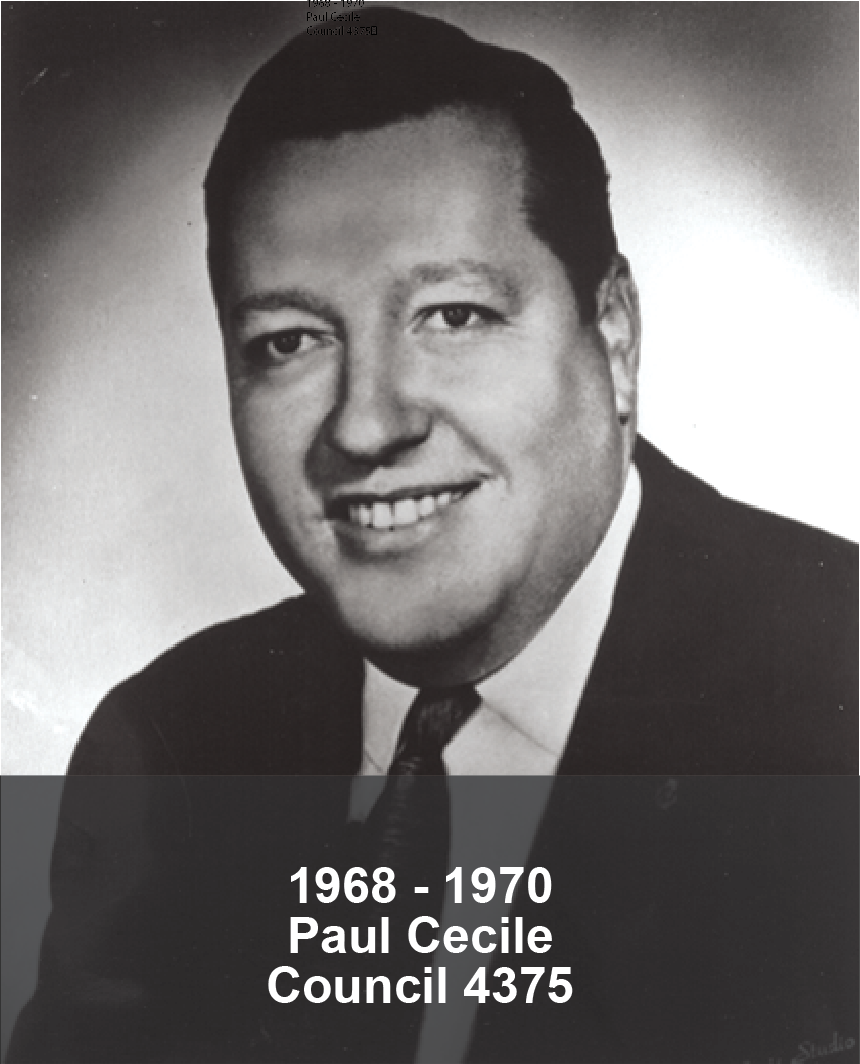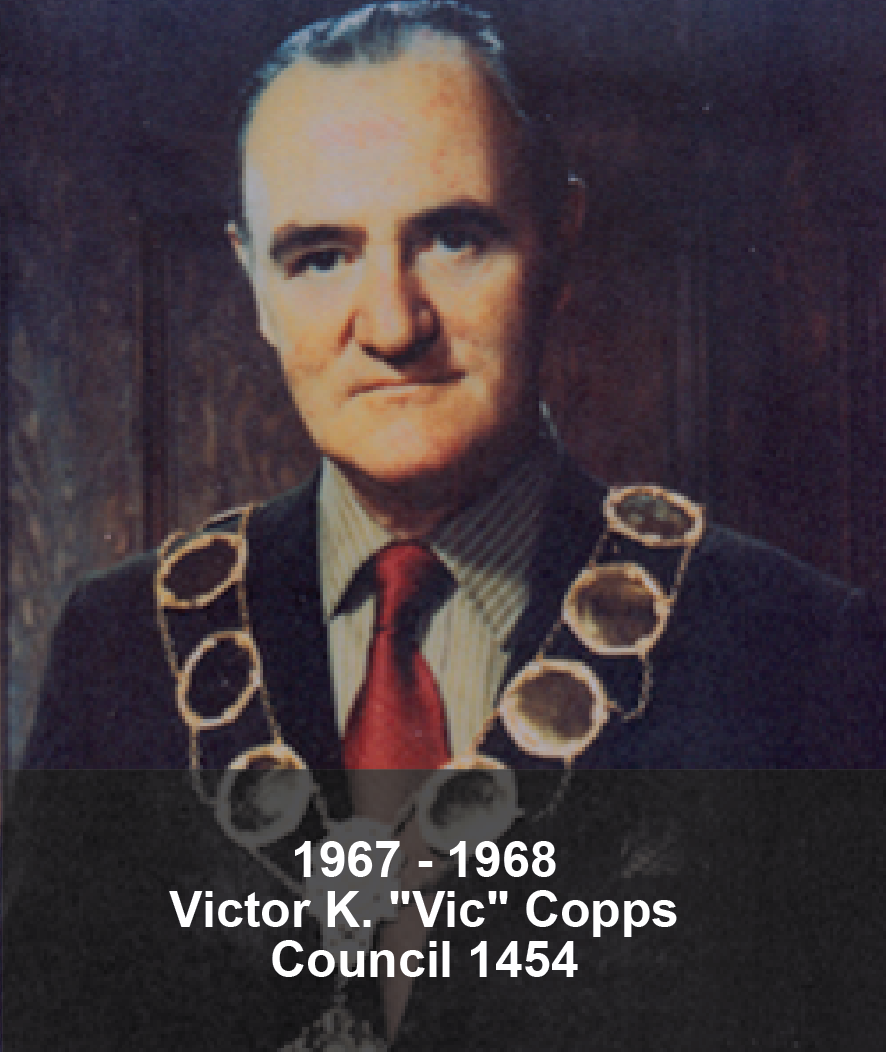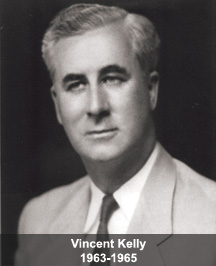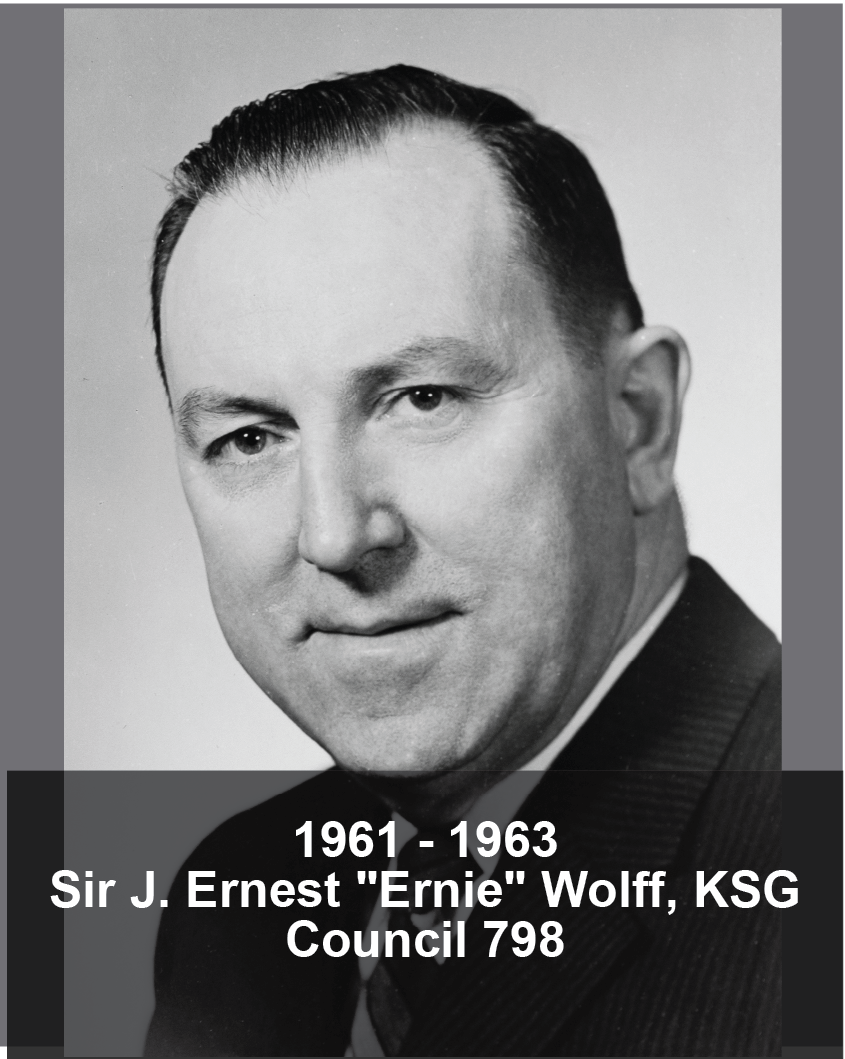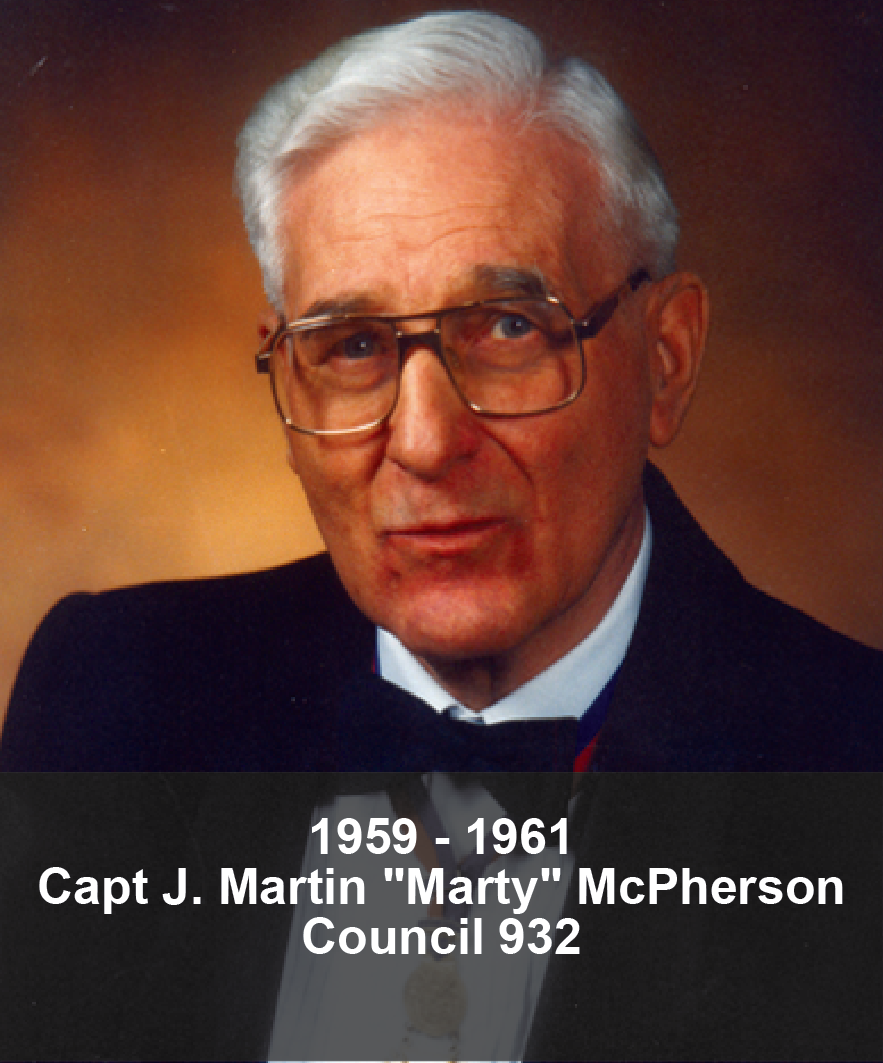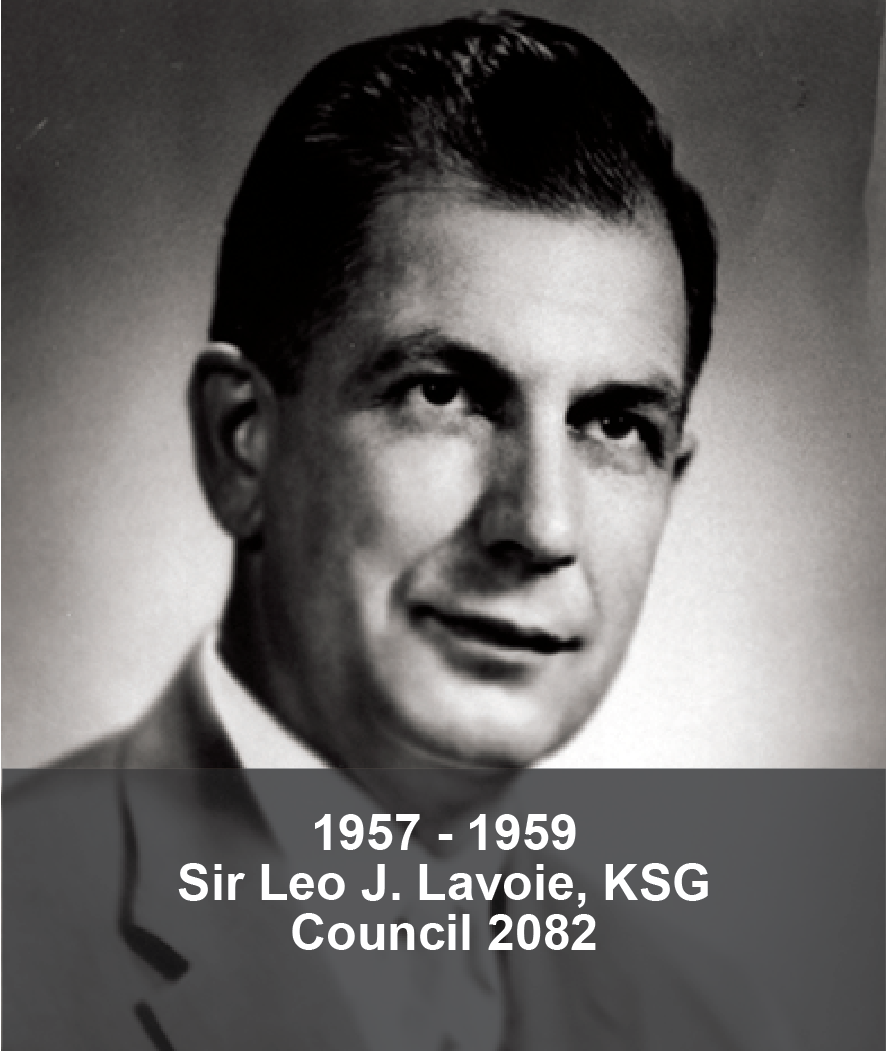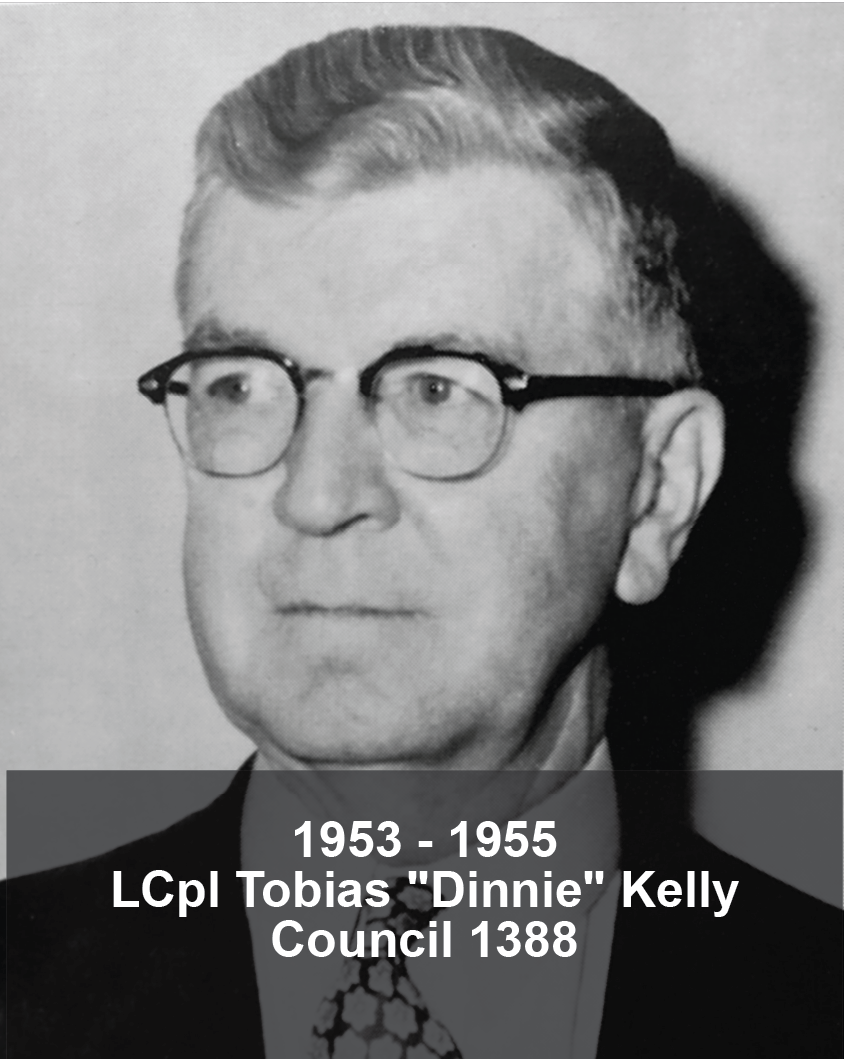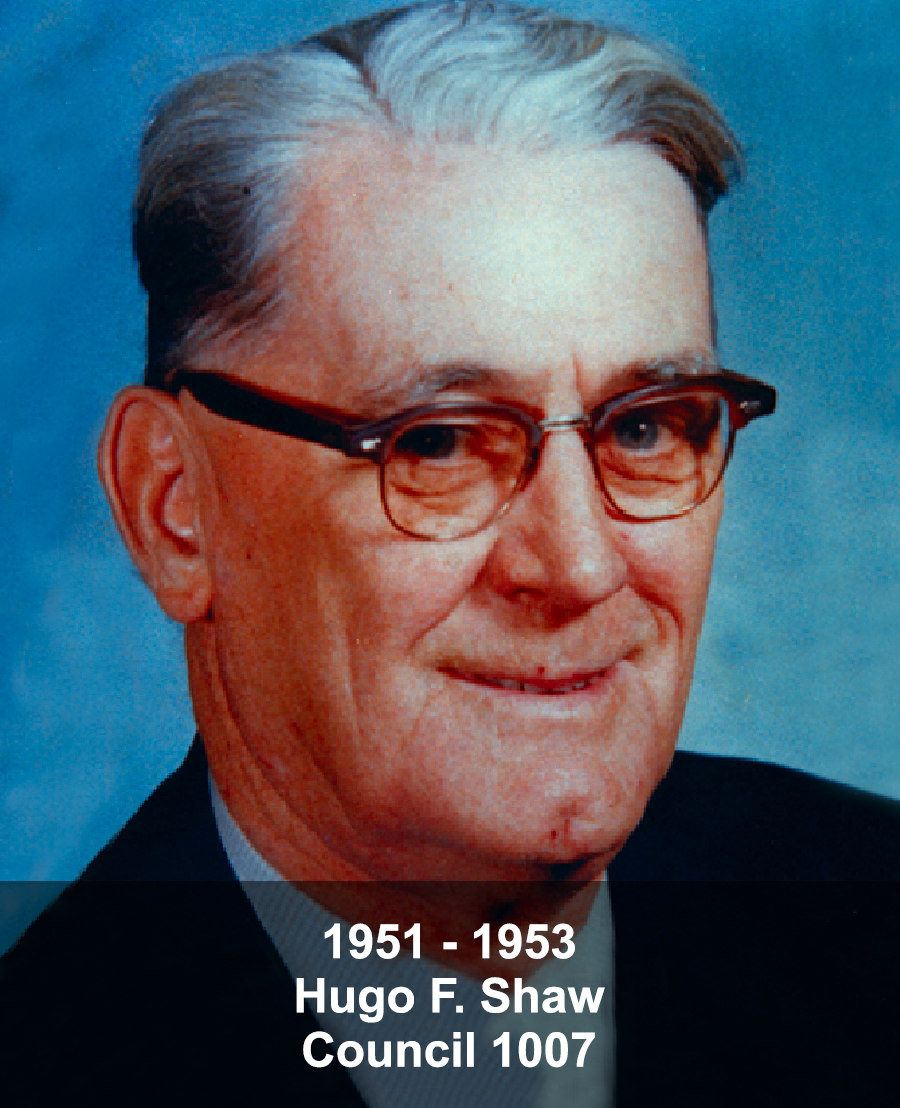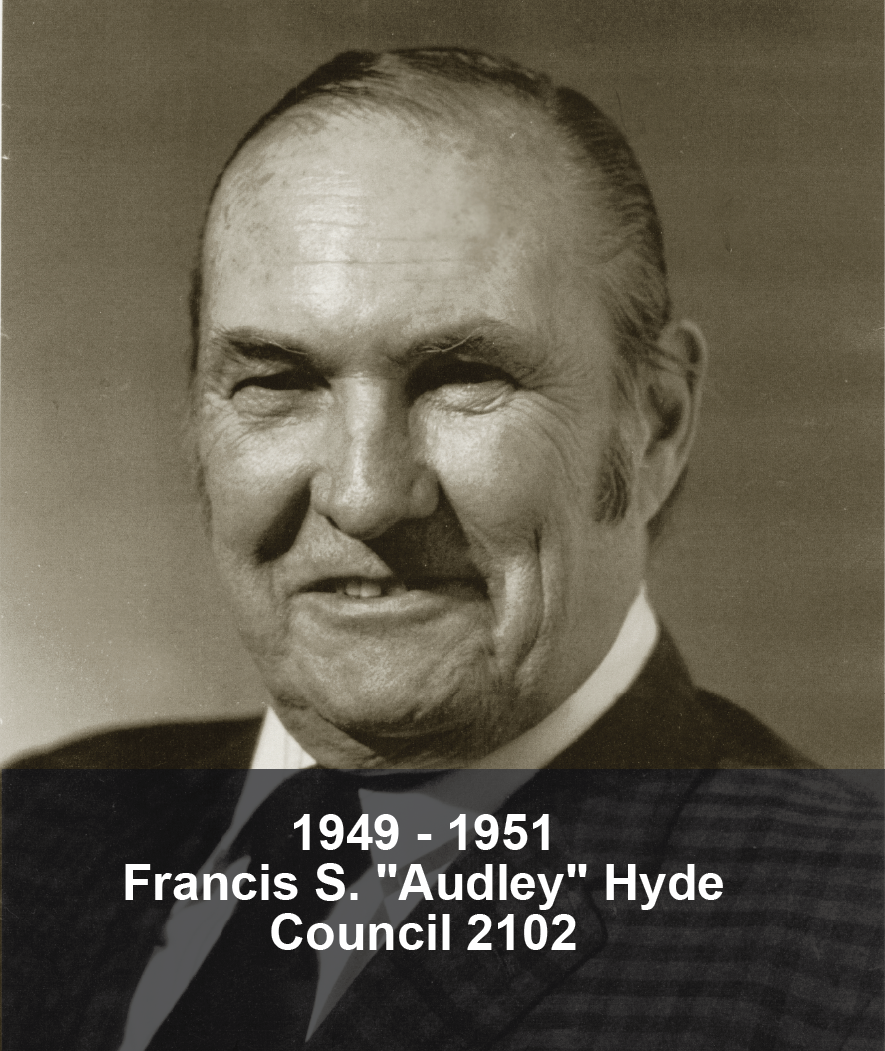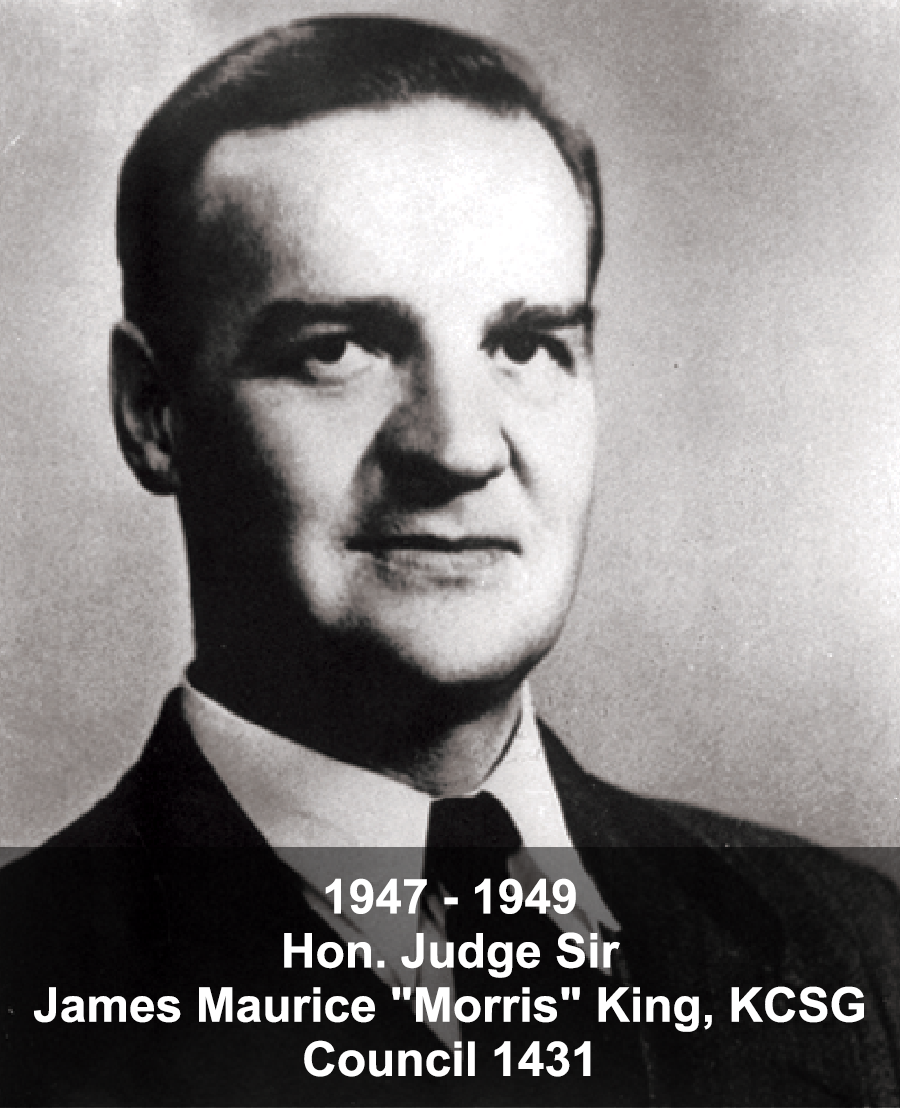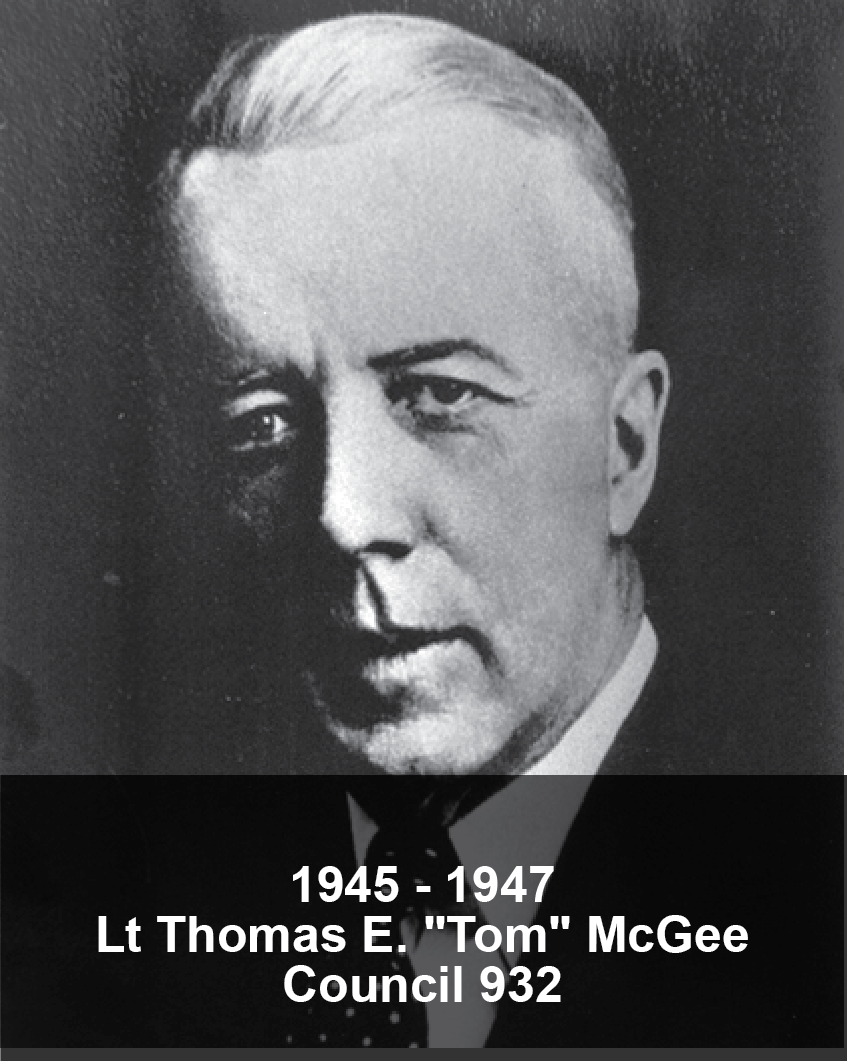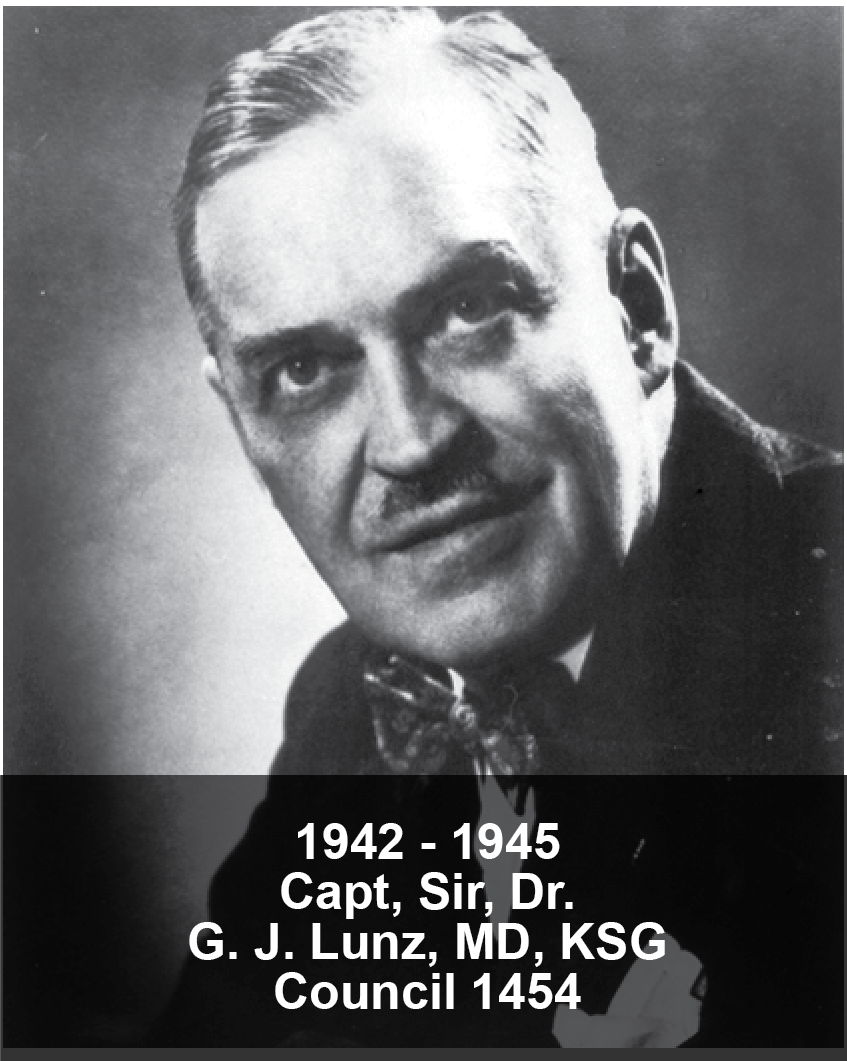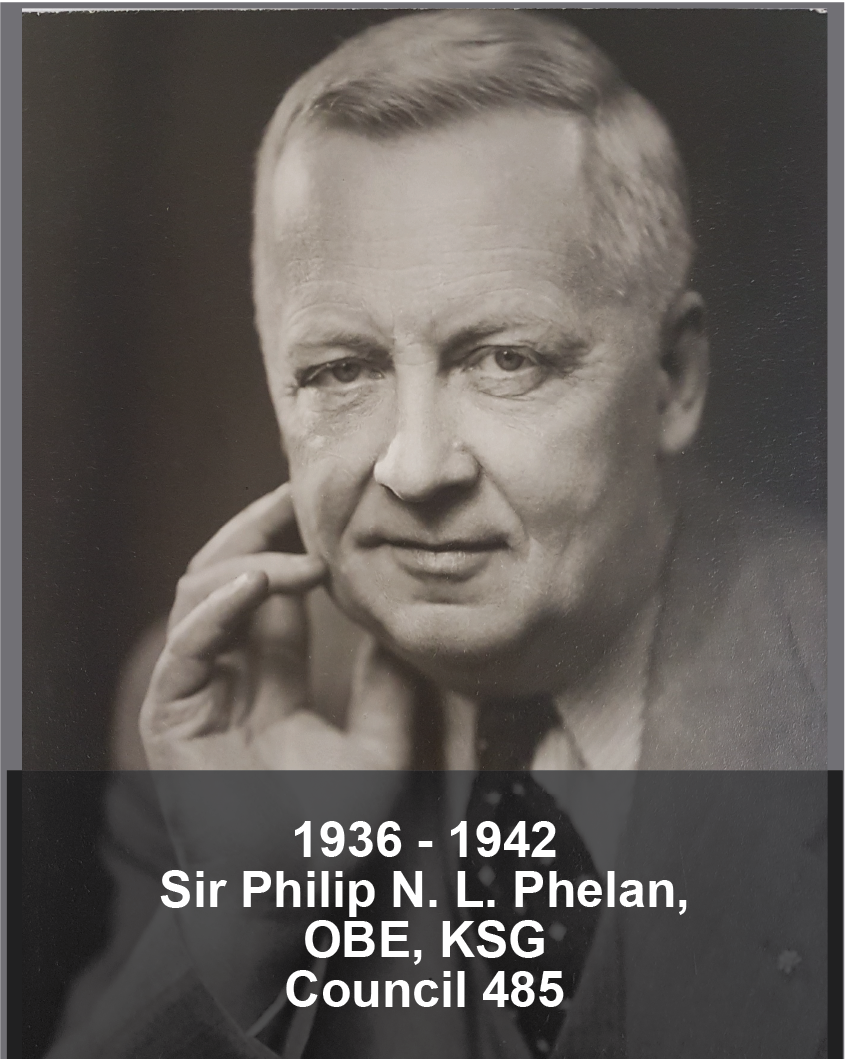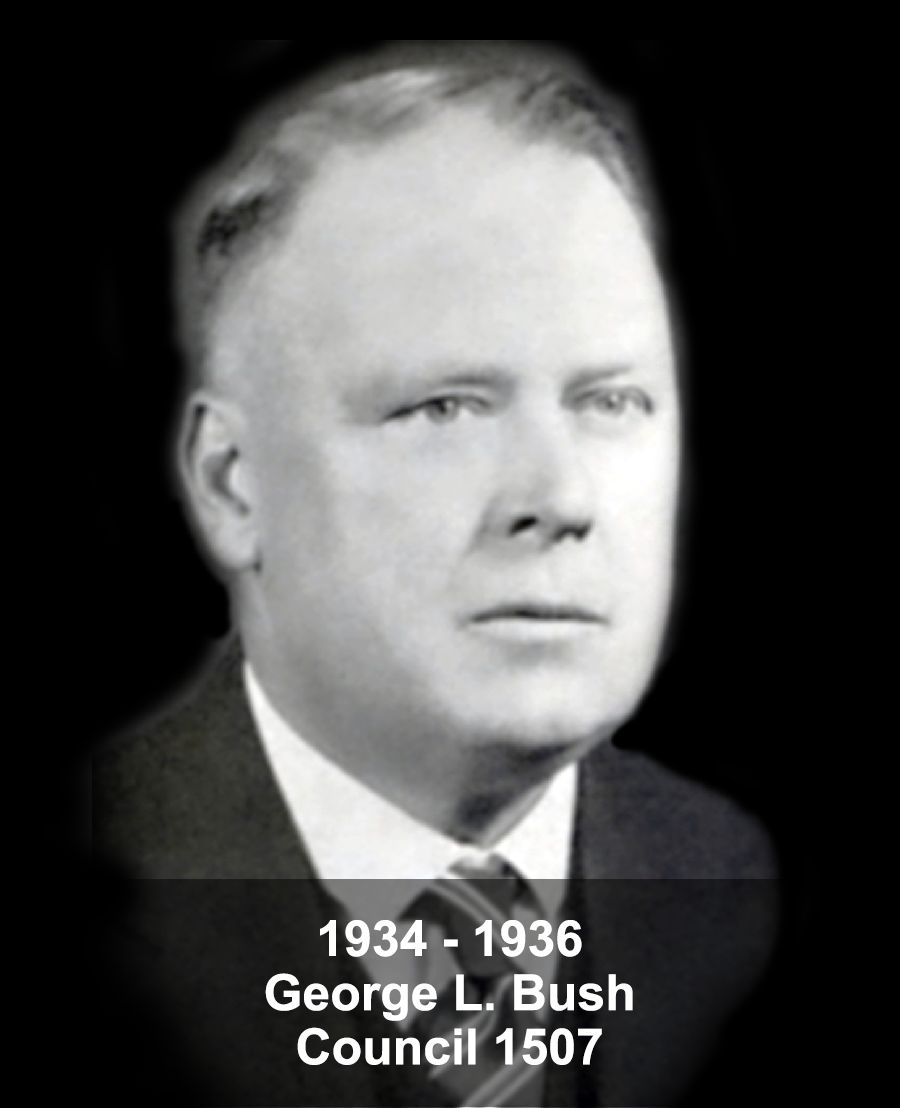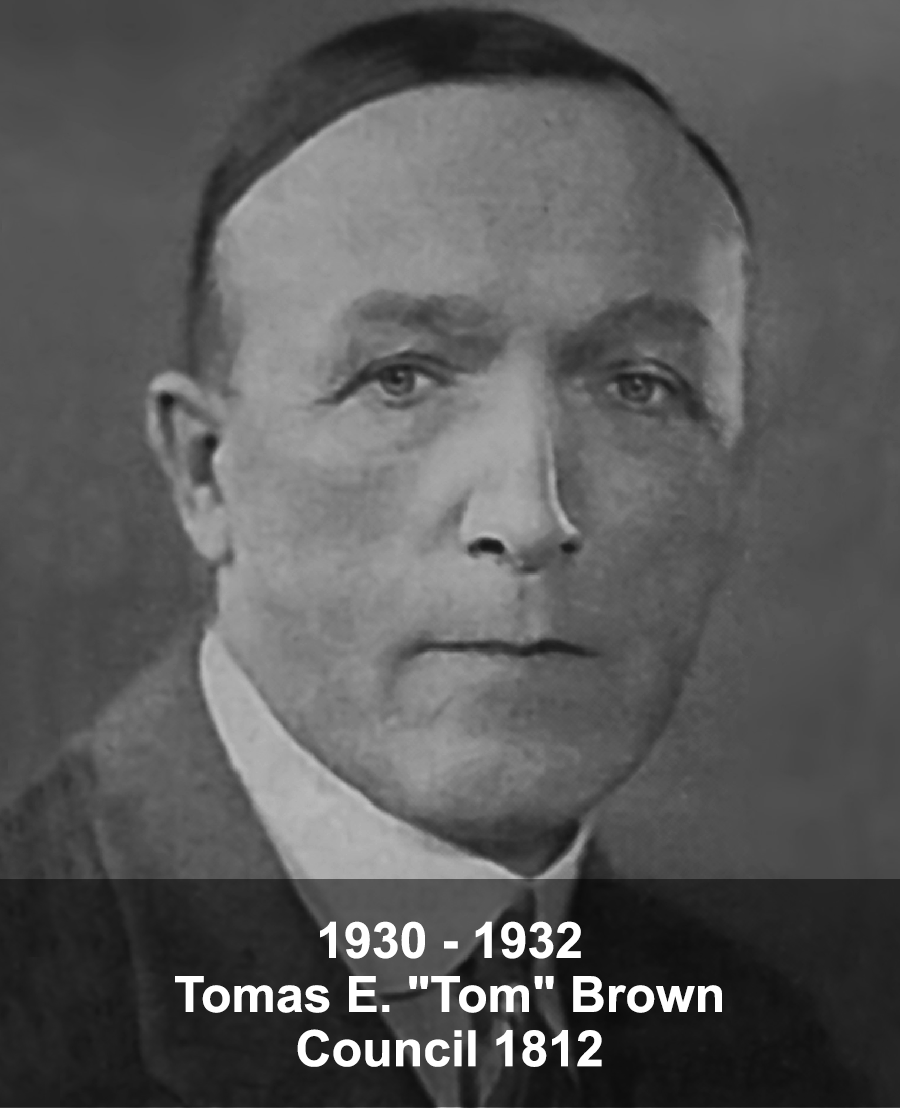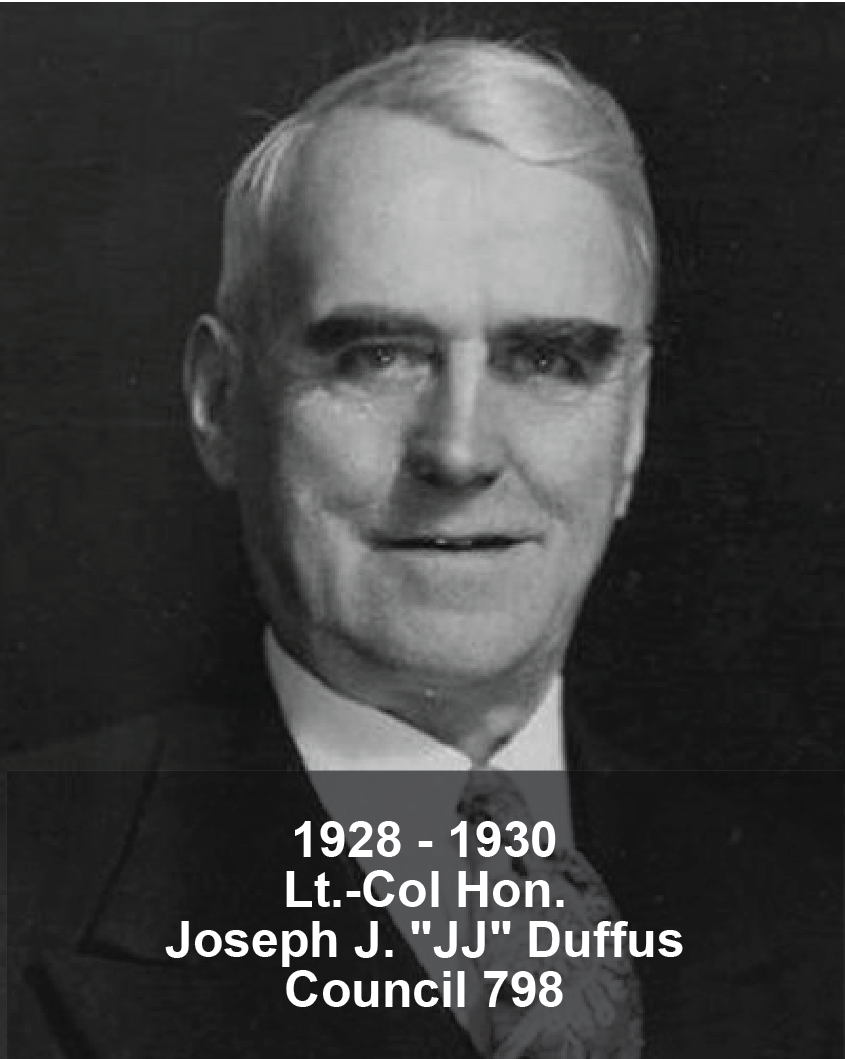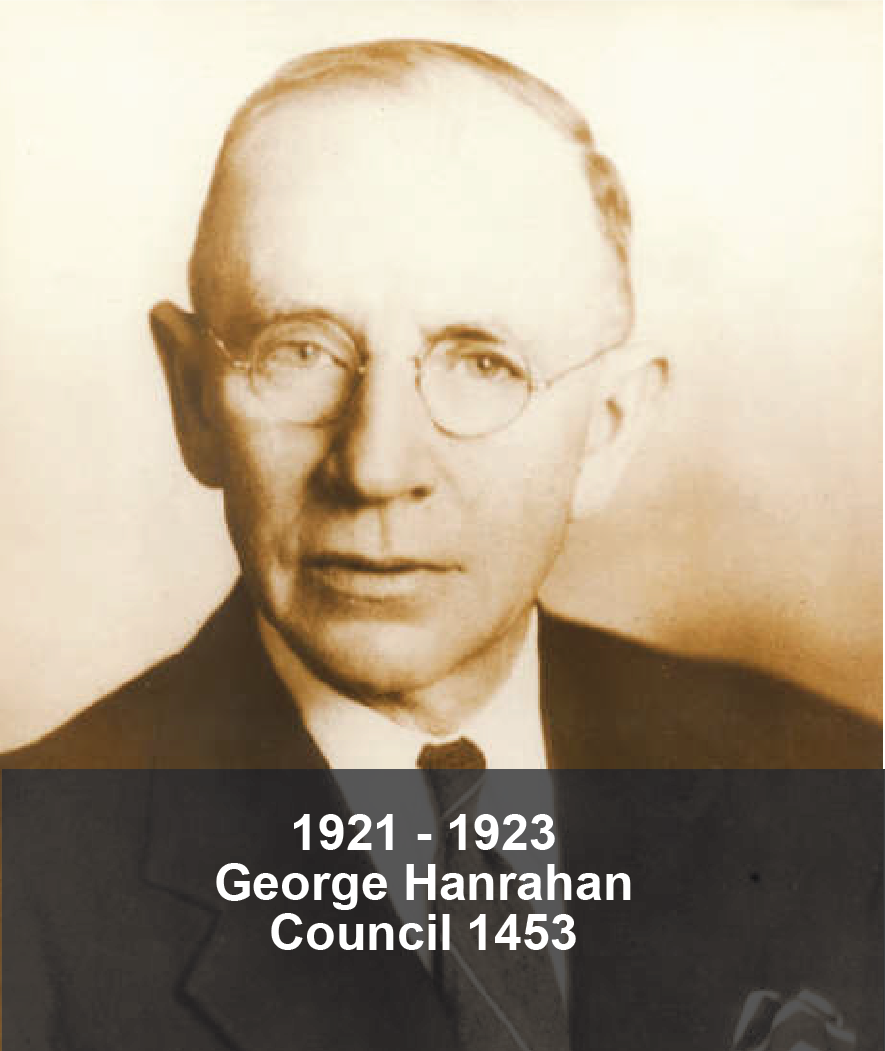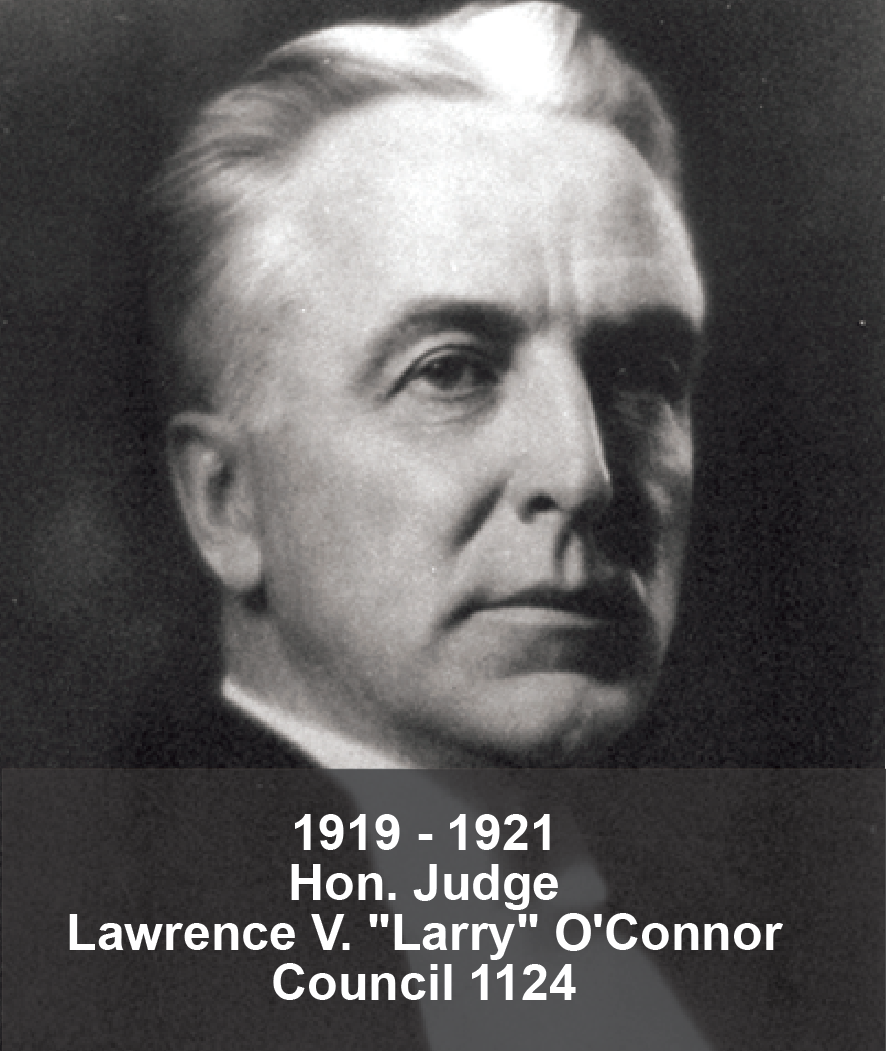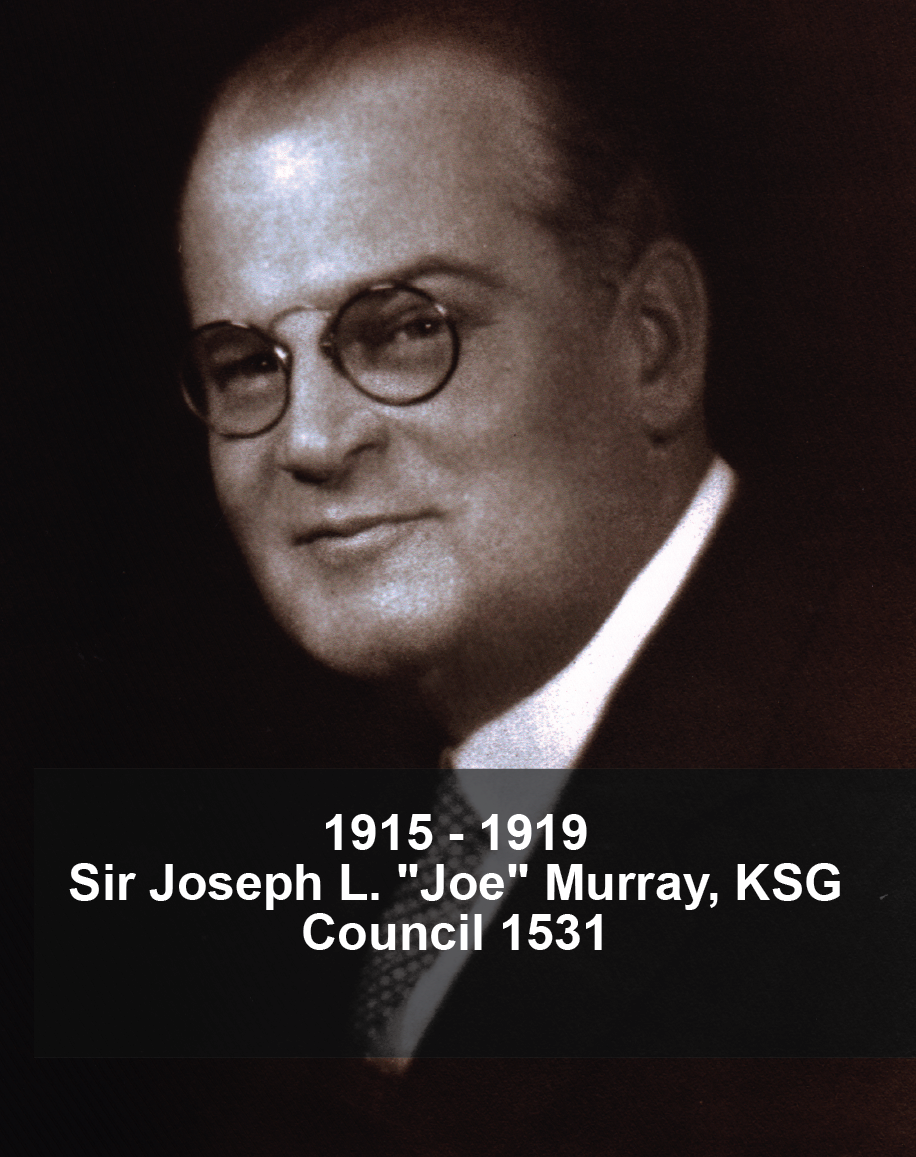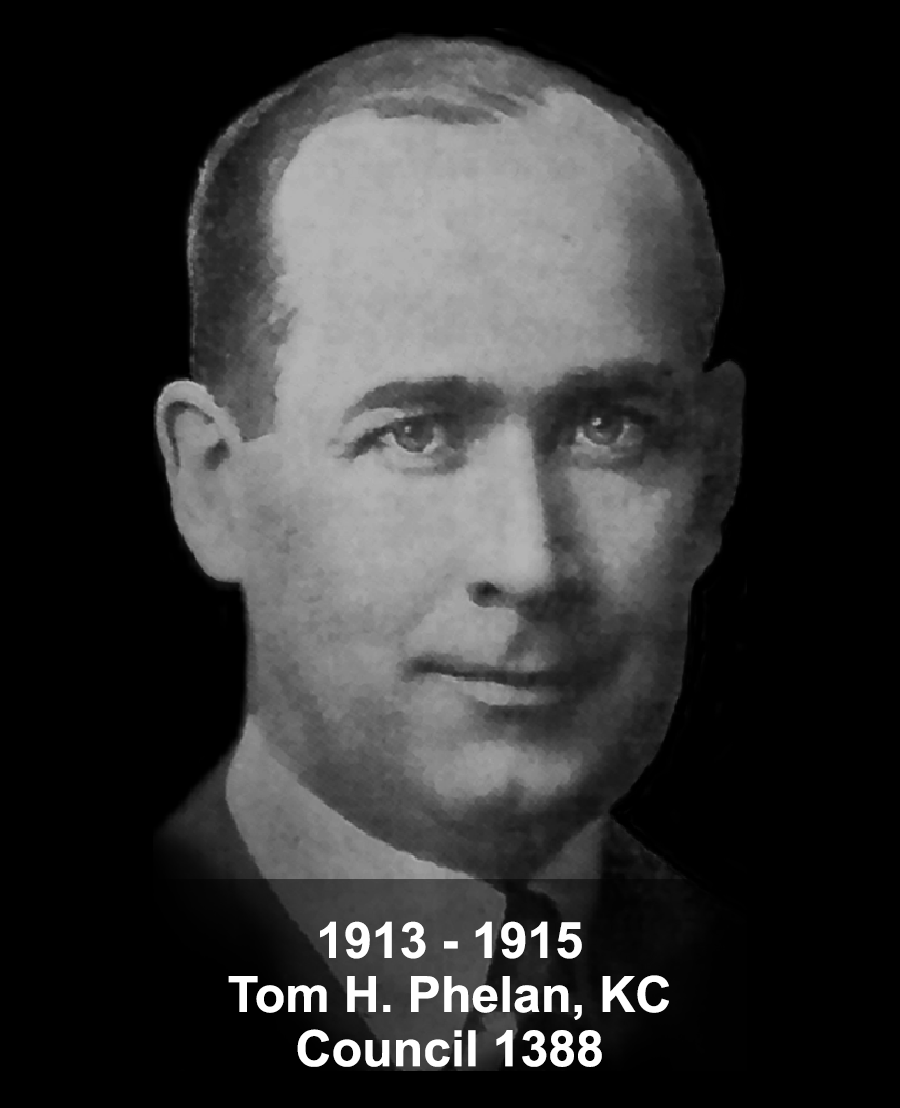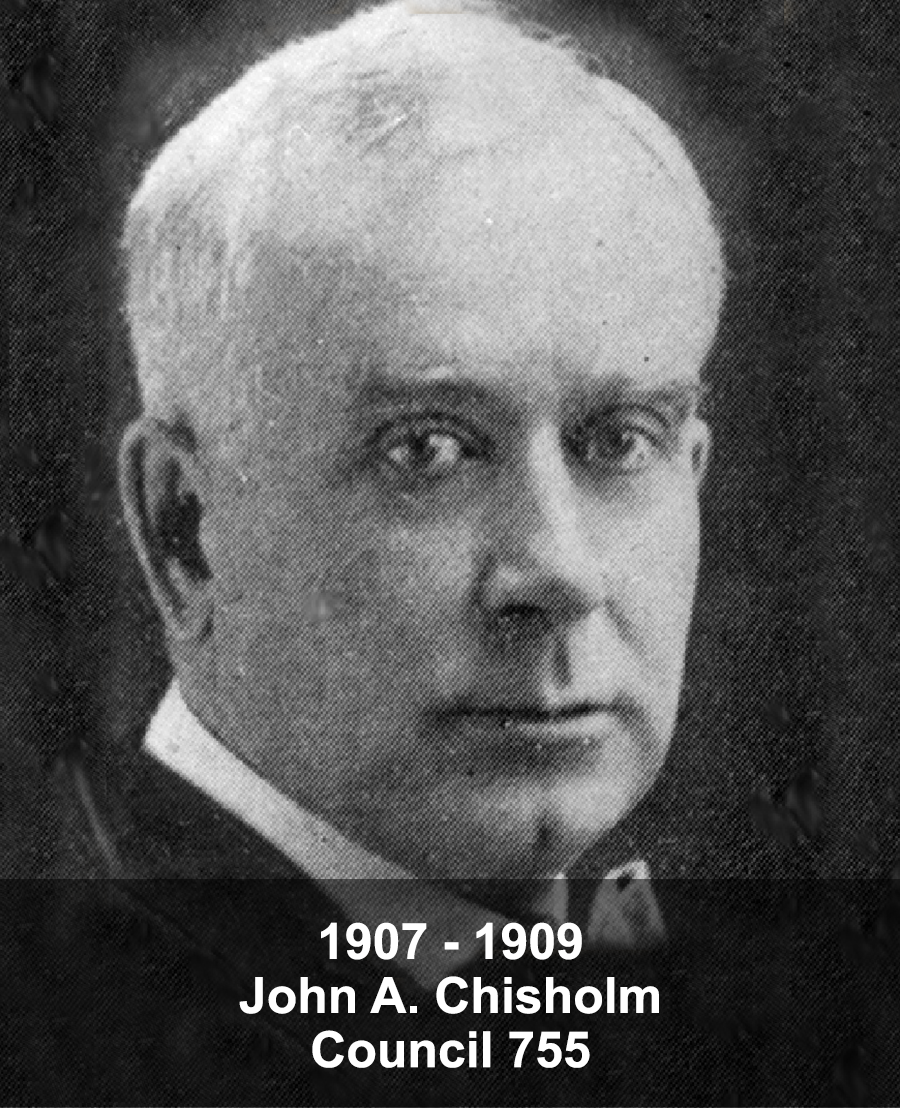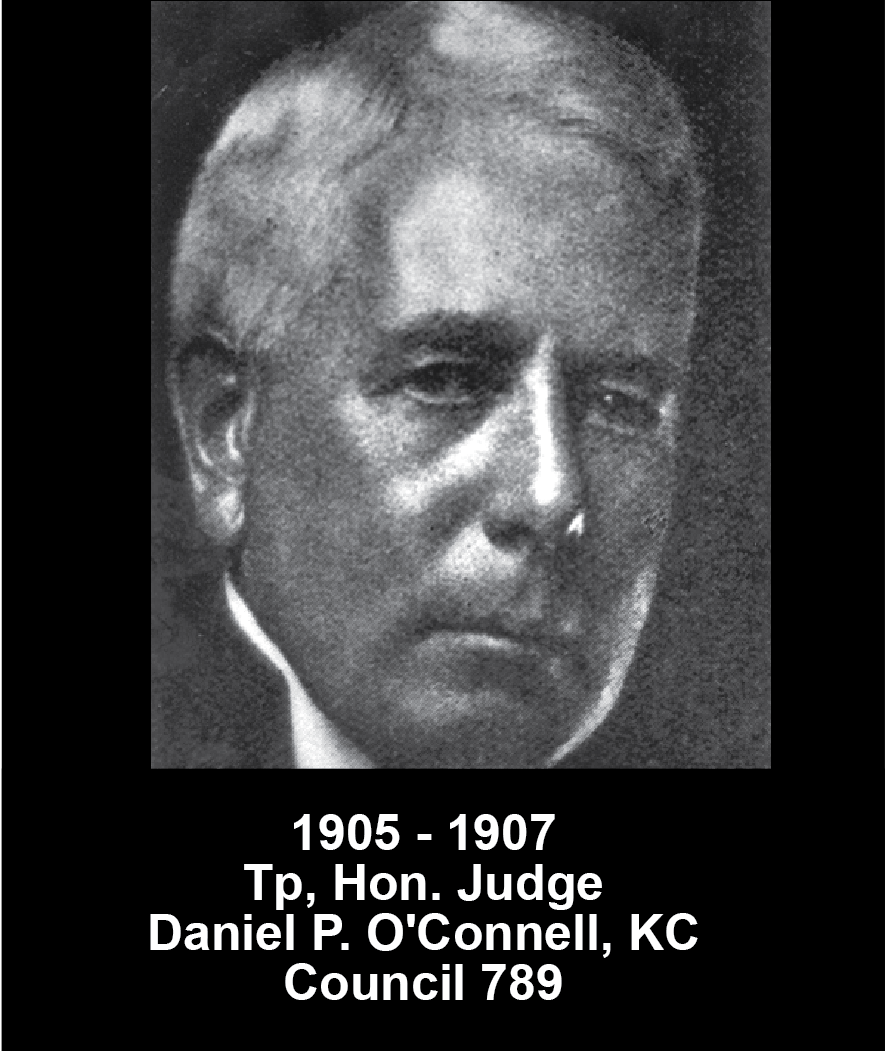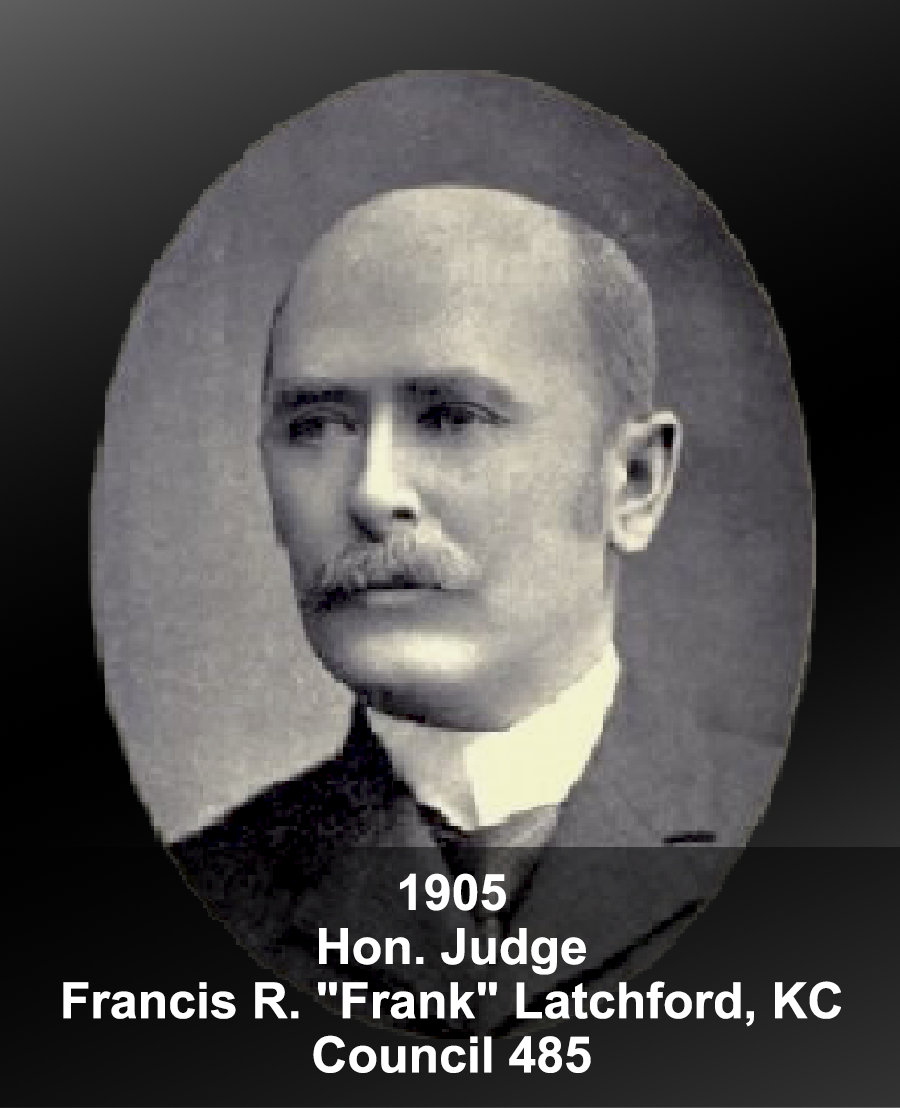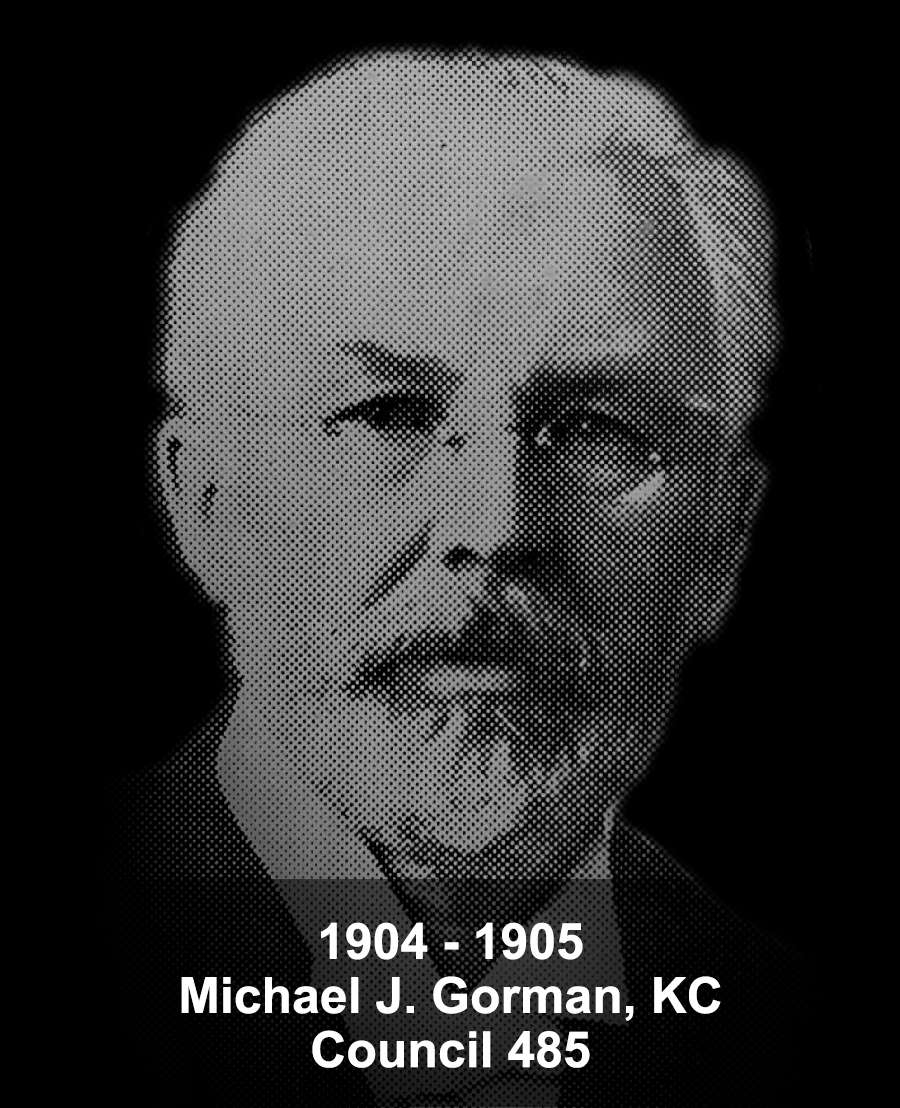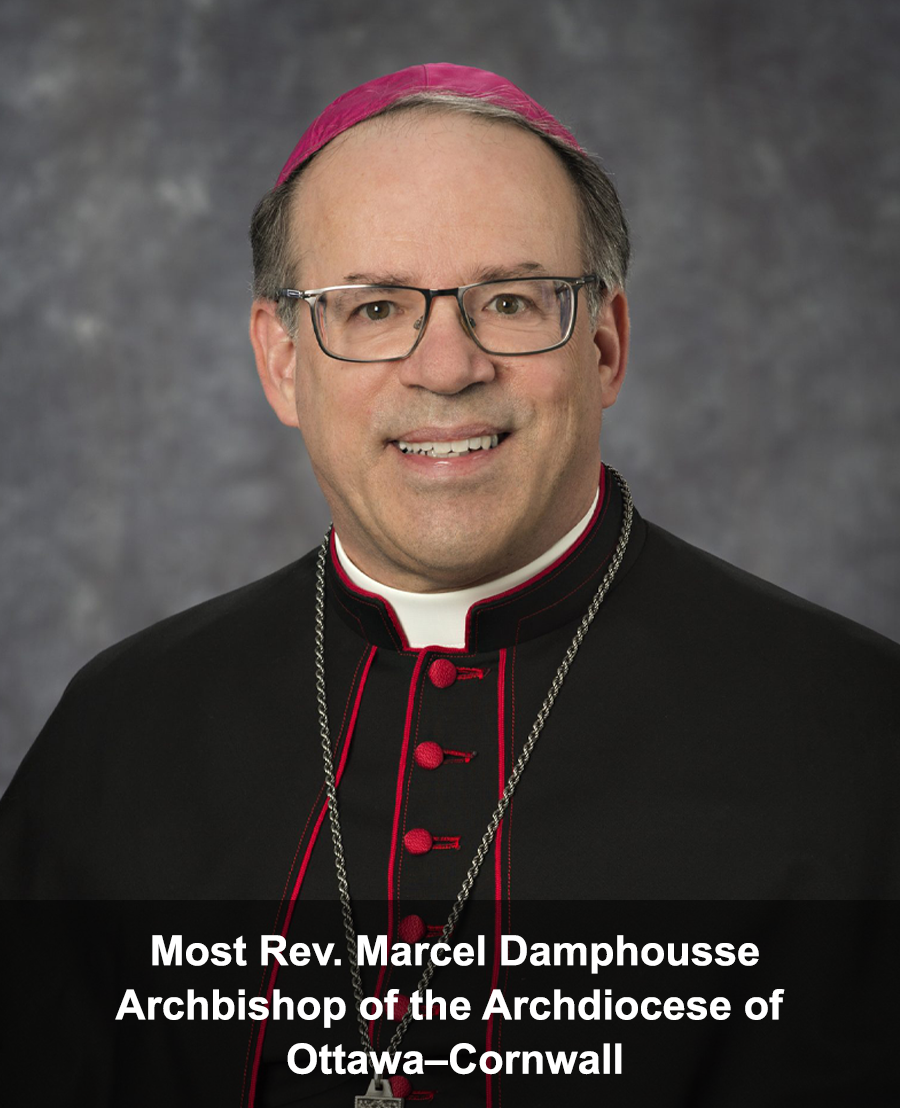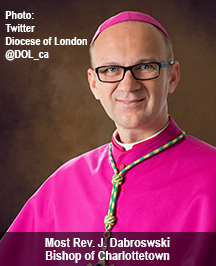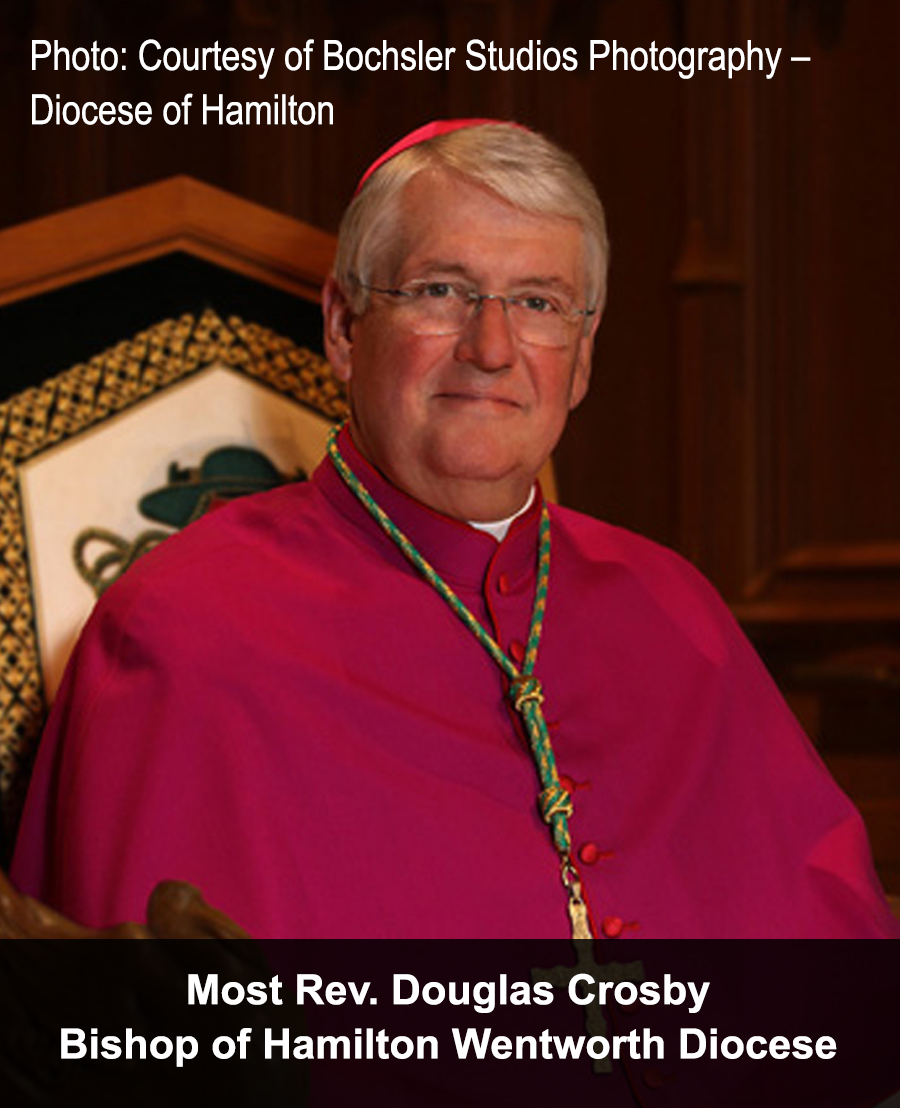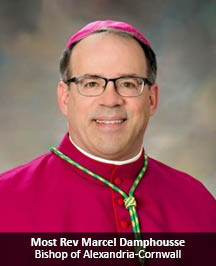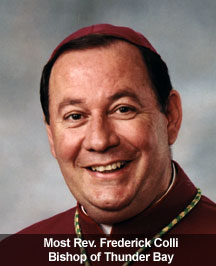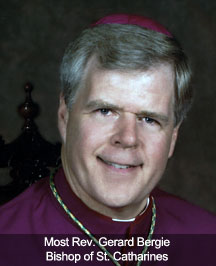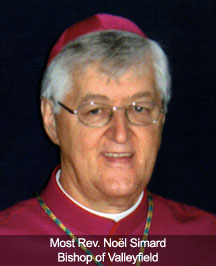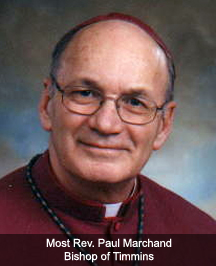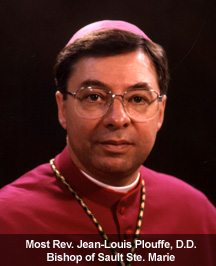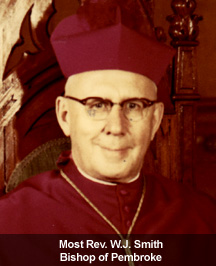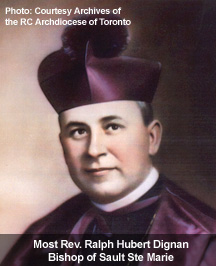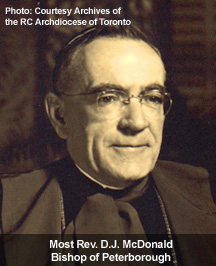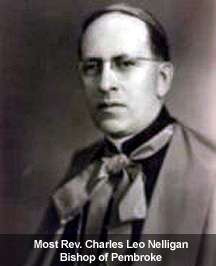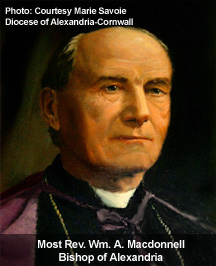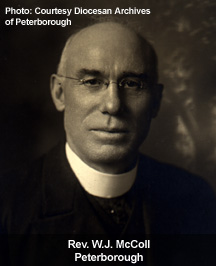History – Where the past has a future
The following are excerpts taken from The Unofficial History of the Knights of Columbus in Ontario (1900-62) Volume one by Immediate Past State Deputy Bruce S. Poulin. We hope you enjoy reading part one of our story.
Many Catholics in the nation’s capital believed that if they remained committed to their Faith and God they would be able to live freely, grow and prosper. But this sentiment changed at the turn of the twentieth century when it became increasingly clear that the local business community was relegating most of the high-risk jobs to either Irish or French Catholic men. This meant that the families of these Catholic men were always threatened with being broken up and dispersed if the husband died or suffered a catastrophic injury at work and the family became financially destitute.
And, in spite of the British North America Act of 1867, which specifically protected separate schools in Ontario (under the separate School Law of 1863) as a precondition to creating the Dominion of Canada, Freemasons were more determined than ever to rid the province of separate schools and especially French-speaking ones located in Ottawa and eastern Ontario.
The appearance of evil which threatened their Faith, the natural family, their children’s religious education, and their language was a constant thorn in the side of many Catholics. For some, fear took over and they stopped living and just survived. But there was another group of Catholic men. Resilient and confident that they had real value in this world. It was some of these men from Saint Patrick Basilica and Notre Dame Cathedral parishes in Ottawa who took matters into their own hands and refused to be vexed any longer. With the support of the local Catholic clergy, they started looking for a way to help Catholic men change society into a better place for their families to live freely, grow, and prosper.
Be the Hero of your own story with the Knights
Pioneer Council 485
One not-for-profit organization that caught their attention was Father Michael J. McGivney’s Catholic fraternal society called the Knights of Columbus. Established in New Haven, Connecticut in 1882, it was supported by the Clergy and its members had access to preferred member insurance rates and member benefits programs in case of a catastrophic injury to the male breadwinner. At the time, there were also three councils that had already been established in Québec and they were very well received by their respective Catholic communities.
Fifty-eight Catholic men gathered in November 1899 to hear from the District Deputy John P. Kavanagh from Canada Council 284 in Montréal, Québec, talk to them about the Order. Before the meeting ended, a vote was held and everyone at the meeting supported the creation of a Knights of Columbus council in Ontario.
With the blessing of Ottawa Archbishop Joseph Thomas Duhamel, Council 485 was established on Sunday, January 28, 1900. Today, it is known as the pioneer council from which all other subordinate councils in the province were created. John Patrick Dunne (originally from Québec City, Québec) became the first Grand Knight of the Council in Ottawa and is known as the Father of the Knights of Columbus in Ontario. In the same vein, the first chaplain for the council, Rev. Father Matthew J. Whelan from St. Patrick Basilica, is considered the spiritual father of the Order in Ontario.
Ontario State Council 1904
With the establishment of Council 485, there were now four councils in Canada which meant that it could become a State Council. But the leadership within Québec and Ontario were confident that they could establish at least four councils in each province thereby making each of their states in their own right. More states in Canada meant more votes at Supreme Convention and more infrastructure and access to financial resources to support local provincial initiatives. So, the race was on. In the meantime, the State Deputy for Canada and Newfoundland was John P. Dunne.
“The leadership within Québec and Ontario were confident that they could
establish at least four councils in each province there
by making each of their states in their own right.”
The Ontario leadership, for its part, set about establishing three more subordinate councils so that Ontario could become a jurisdiction of its own. The men’s strategy was rather simple. First, they needed to be visible in a myriad of large Catholic communities. Demographically, Catholics were overwhelmingly concentrated in cities and towns, many of which were connected via the railway. So, the Knights of Columbus members prioritized travel by using the railway networks.
Canada’s climate does not lend itself to accessible transportation, especially in the early-to-mid 1900s. The transportation infrastructure at the time consisted largely of dirt roads which would buckle from the winter frost and waterways would freeze, in some cases for as long as five months. The railway, on the other hand, was dependable all year long. The railway system created a vast array of small-town gathering and maintenance centers making train stations the hub of most Ontario cities and ideal for recruiting Catholic men to the Order.
“The railway system created a vast array of small-town gathering and maintenance
centers making train stations the hub of most Ontario cities
and ideal for recruiting Catholic men to the Order.”
On May 25, 1903, a second charter was granted in Ontario to Council 789 in Peterborough. October 7, 1903, saw the establishment of Frontenac Council 728 in Kingston. The fourth council needed was established on November 29, 1903. It was called Ontario Council 755 and it was located in Cornwall, Ontario.
On July 1, 1904, the inaugural Annual State Convention was held in Ottawa, Ontario.
Past State Deputies
Since then, Catholic men from the middle class, including selfless senior public servants, lawyers, clergymen, and businessmen made up the majority of the members of the burgeoning Order until the Great War (1914-18).
Former State Chaplains
Choose to be resilient like the Knights and the rest will follow
Canadian Catholic Army Huts & Spanish Flu
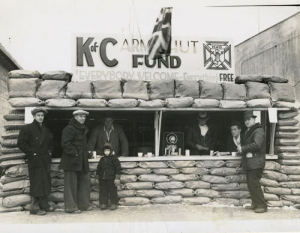
K of C Army Hut in Flin Flon, Manitoba, circa 1940 Photo: www.kofc.org
During the Great War, a member of Council 485, Maj. Rev. John J. Gorman was wounded in the Battle of the Somme. He returned to Ottawa to recover. While convalescing, he suggested that his brother Knights establish a Canadian Catholic Army Huts program for the Canadian troops deployed overseas. He argued that our troops did not have access to material and spiritual comforts. His idea, supported by State Deputy Joseph L. “Joe” Murray, was adopted by the voting delegates at the 1917 Annual State Convention of the Knights of Columbus held in Hamilton, Ontario.
Returning Veterans joined the Knights, partly because of the support they had received from the Knight while deployed overseas. Another factor was the Spanish flu because the Knights offered its members life and disability insurance at a time when universal health care did not exist in Canada. Since then, it may be truly said that the ranks of the Knights of Columbus everywhere are to be found old and young, rich and poor, humble and exalted, illiterate and learned – we have broken down the barriers between those classes and have provided the facilities for getting together.
Great Economic Depression, Bigotry, and Totalitarianism
The unprecedented period of growth in the 1920s was followed by what former British Prime Minister Winston Churchill described as “the years that the locust hath eaten.” The Great Economic Depression lead to an unprecedented decline in membership among the uninsured working-class members in the Order.
Undeterred by their dwindling numbers, the remaining members of the Order in Ontario successfully took on the Ku Klux Klan when it first appeared in Niagara Falls, Ontario on August 9, 1924, and launched several terrorist attacks on Catholic churches in Ontario. Likewise, the Knights challenged Alvin R. Kauffman, owner of the Kauffman Rubber Company located in Kitchener-Waterloo, and his anti-French Catholic birth control efforts in Vanier, Ontario. This struggle ended up in the courtroom and is now commonly known as the Eastview Birth Control Trial (1936-37). But it was the threat of totalitarianism (including communism and Nazism) that got the most attention from the members of the Order in Ontario largely because of totalitarianism’s threat to their Faith, the natural family, their children’s religious education, and the right to private property.
“it was the threat of totalitarianism (including communism and Nazism) that got the most attention from the members of the Order in Ontario largely because of totalitarianism’s threat to their Faith, the natural family, their children’s religious education, and the right to private property.”
Members within the Order were being challenged from all sides: Politically by communist and Nazi sympathizers, economically by the Great Economic Depression and its associated financial hardships, and socially by the anti-Catholic birth control movement. Yet, in its seemingly darkest hour, when their Catholic Faith seemed to be enduring evil’s worst assault, another world war broke out and the Knights would be challenged to do more.
Find out why you should have Knights of Columbus Insurance
Canadian Army Huts
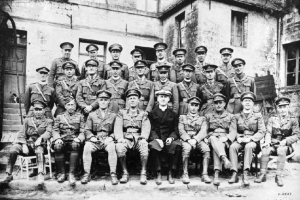
Canadian Catholic chaplains meet with Bishop Michael Fallon of London, Ont., in July 1918. Photo: courtesy Dept. of National Defence/Library and Archives Canada
With a much-reduced membership and empty financial reserves in the council coffers, State Deputy Sir Philip N.L. Phelan of Council 485, appealed to the membership to support a new Canadian Army Huts program during the Second World War (1939-45). There were a thousand reasons for his brothers Knights to refuse Phelan’s request. He knew his appeal could precipitate the total destruction of the Order in Ontario. How much more could the members give? He must have asked himself a dozen times if not more. Much to their credit, and the noble legacy of devotion and inspiration they have left behind, these dedicated members did respond. They rose to the challenge and provided the material and spiritual comforts for the troops deployed overseas for the duration of the war under the auspices of the Canadian Army Huts program.
Much like the Great War, returning veterans flocked to the Knights of Columbus councils to join after the war and they were all received with warm arms of brotherly love. This influx was partly based on the support the Knights had given them during the war and, in part, because of the maturation of the Greatest Generation cohort.
Cold War & the Comic Book War
The end of the Second World saw a bipolar world divided into US-led Western and Russian -led communist spheres of influence characterized by political, economic, and propaganda rivalries. The early years of the Cold War have often been referred to as the golden age of the Catholic Church. It was a time that saw the Greatest Generation cohort settle down, get married, had children, and return to the church. Since parishioners have always been the lifeblood of the Knights of Columbus, the ranks of the Knights grew as the church pews also filled up with the devoted.
For the Knights of Columbus in Ontario, the Cold War was also known as the “Comic Book War.” More specifically, this period was largely characterized by the war against violence in children’s comics led by State Deputy Vincent Kelly of Council 485. After a successful campaign to rid these comics, the Knights found themselves engaged in a battle against pornography (a.k.a. romance) in children’s comics.
While debates on censorship regarding violence and pornography were being waged, biologist and zoologist Alfred Kinsey released two reports on the sexual behaviors of human men and women. While the studies were later proven to be severely flawed, the damage to American and Canadian societies had been done. Deemed as “scientific” by the leaders of secular society, Kinsey’s reports were used to support a new revised version of communism called Critical Theory.
Sexual Revolution and Critical Theory
Unable to appeal to the dominant male middle class, and sensing an opportunity to appeal to the young Baby Boomer cohort, totalitarianism stopped talking about the struggle of economic classes. Instead, communism morphed into a hybrid of Marxism and Freudism called Critical Theory. It centered on gender and the liberation of women from Western civilization’s sacred patriarchal society largely through sexual liberation and war against the natural family.
It is worth noting here that the characteristic of critical theory closely resembles that of Freemasonry, the Illuminati, and totalitarianism (communism and Nazism). So much so, in fact, that one is hard-pressed not to associate all of these disciplines as an unbroken sequence from one revolution to another in search of one world secular government. Its followers keep trying to make themselves more appealing to the next generation cohort only to fail again just like the Protestant Revolution (1517), the French Revolution (1799), and the October Revolution (1917). As St. Matthew 16:18 said: “Thou art Peter, and upon this rock, I will build my church, and the gates of Hell shall not prevail against it.” The church shall not fail, but evil keeps trying to bring about an age of chaos. Time after time, as the history of the Knights of Columbus in Ontario, has shown, persecution has not snuffed out the Faith but brought forth great men whose brave examples give strength to our besieged Church and our Order. So, the struggle continues…
''Five reasons why you should Get Involved with the Knights of Columbus in Ontario''
Read aboutConclusion – Part One
In a world where government programs are falling short and community organizations are struggling to fill the gap, it is the common consensus among Popes, Catholics and many non-Catholics that the Knights in Ontario have, over the years, acquitted themselves nobly as true and loyal Catholic Canadian citizens since the order was established in Ontario on January 28, 1900, with the pioneer Council #485 in Ottawa.
In a world that desperately needs men to stand out, the Knights of Columbus has been helping Catholic men change society into a better place for their families to live freely, grow, and prosper – one volunteer at a time. It is an enviable legacy that has also become the status symbol of choice for many Catholic men and friends forever type of deal.
Help write our next chapter
History to be continued …
Excerpts are taken from The Unofficial History of the Knights of Columbus in Ontario (1963 – 2025) Volume 2 by State Deputy Bruce Poulin.


